 Search by Keyword
|
"I WANT YOU (SHE'S SO HEAVY)"
(John Lennon – Paul McCartney)
Lyric writing was one of The Beatles' greatest strengths. John and Paul, especially, developed a knack for conveying a story that the average listener could easily relate to, many times within only a three minute framework.
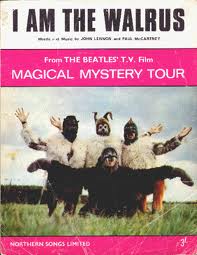 Witness “Yesterday” in which Paul simplistically expresses the immense heartbreak of abandonment, something almost everyone on the planet has experienced at one time or another. In “Help!,” John vividly relates the need for emotional support because of the uncertainty of life that we experience as we age. Even “I Am The Walrus” achieves greatness in its use of absurd wordplay purposely woven to confound listeners who look for deep meaning in their lyrics, these lyrics being sung convincingly as if there were indeed a mystery here to unravel when there really wasn't any. Witness “Yesterday” in which Paul simplistically expresses the immense heartbreak of abandonment, something almost everyone on the planet has experienced at one time or another. In “Help!,” John vividly relates the need for emotional support because of the uncertainty of life that we experience as we age. Even “I Am The Walrus” achieves greatness in its use of absurd wordplay purposely woven to confound listeners who look for deep meaning in their lyrics, these lyrics being sung convincingly as if there were indeed a mystery here to unravel when there really wasn't any.
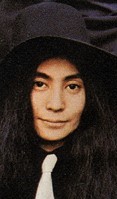 Then, in 1969, John experiments with writing lyrics that convey deep emotion using hardly any words at all. Could this be done? In “I Want You (She's So Heavy),” a track that approaches eight minutes in length and is the longest song in the entire Beatles catalog (“Revolution 9” is nearly half a minute longer, but can arguably be viewed as more of a “sound collage” than an actual song), John tells a desperate story of his deep emotional feelings for his new love Yoko Ono using a total of only fifteen words! These words, most of them repeated many times over, are “I/ want/ you/ so/ bad/ it's/ driving/ me/ mad/ she's/ so/ heavy/ babe/ know/ yeah.” Even the shortest song in the Beatles cannon, “Her Majesty,” which ranks in at a mere 23 seconds in length, has a total of thirty-eight words, some of these being repeated as well. Then, in 1969, John experiments with writing lyrics that convey deep emotion using hardly any words at all. Could this be done? In “I Want You (She's So Heavy),” a track that approaches eight minutes in length and is the longest song in the entire Beatles catalog (“Revolution 9” is nearly half a minute longer, but can arguably be viewed as more of a “sound collage” than an actual song), John tells a desperate story of his deep emotional feelings for his new love Yoko Ono using a total of only fifteen words! These words, most of them repeated many times over, are “I/ want/ you/ so/ bad/ it's/ driving/ me/ mad/ she's/ so/ heavy/ babe/ know/ yeah.” Even the shortest song in the Beatles cannon, “Her Majesty,” which ranks in at a mere 23 seconds in length, has a total of thirty-eight words, some of these being repeated as well.
What is unique about John's “I Want You (She's So Heavy)” is that no more words were needed to convey the intense and profound impact that Yoko was having on John's life at the time. Everyone listening could understand. Enough said!
Songwriting History
"Lennon's passion for Ono had shaken him to the core," states author Ian MacDonald in his book "Revolution In The Head." "His long dreamed-of erotic mother had finally arrived and the reality was almost too much for him. Sexually addicted to her, he was helplessly dependent...Lennon is literally obsessed."
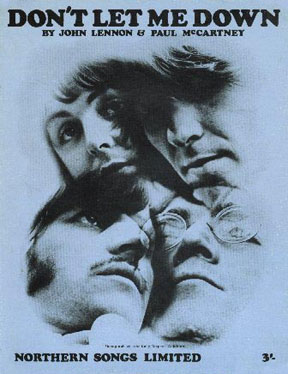 John's lyrical references to Yoko can easily be detected in his 1968 compositions that appear on the “White Album,” such as “Julia,” “Happiness Is A Warm Gun” and “I'm So Tired.” As of early 1969, however, it appears that his dependence on their relationship had become obsessive to the point that it was almost the only subject he felt impelled to write about. “Don't Let Me Down” was his plea for her to never forsake their relationship, and the “All I want is you” chorus of “Dig A Pony” relates this message loud and clear as well. John's lyrical references to Yoko can easily be detected in his 1968 compositions that appear on the “White Album,” such as “Julia,” “Happiness Is A Warm Gun” and “I'm So Tired.” As of early 1969, however, it appears that his dependence on their relationship had become obsessive to the point that it was almost the only subject he felt impelled to write about. “Don't Let Me Down” was his plea for her to never forsake their relationship, and the “All I want is you” chorus of “Dig A Pony” relates this message loud and clear as well.
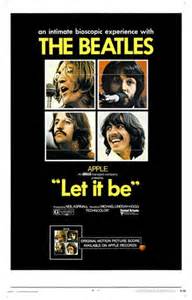 “I Want You (She's So Heavy),” which was premiered to The Beatles toward the end of the January 1969 rehearsals for what became the “Let It Be” album and film, continued in this same pattern. “That's me, about Yoko,” he explained when asked in 1980 about the authorship of the song. His near-demented desire for her this time around lyrically consisted of not much more than the title of the song repeated various times and in various ways, in many cases screamed at a feverish pitch. “I Want You (She's So Heavy),” which was premiered to The Beatles toward the end of the January 1969 rehearsals for what became the “Let It Be” album and film, continued in this same pattern. “That's me, about Yoko,” he explained when asked in 1980 about the authorship of the song. His near-demented desire for her this time around lyrically consisted of not much more than the title of the song repeated various times and in various ways, in many cases screamed at a feverish pitch.
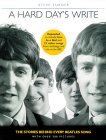 Many throughout the years have held the song in derision because of its minimal use of lyrics, the popular BBC TV current affairs program “24 Hours” even reading off the lyrics on air back then as an example of the banalities of pop music. As related in Steve Turner's book “A Hard Day's Write,” Lennon responded to this by saying that the song's “simplicity made it superior to 'Eleanor Rigby' and 'I Am The Walrus.' To him, this was not a reversion to mindless monosyllabic pop but simply economy of language.” And to Rolling Stone magazine, John stated: “Simplicity is evident in 'She's So Heavy.' In fact a reviewer wrote: 'He seems to have lost his talent for lyrics; it's so simple and boring.' When it gets down to it, when you're drowning, you don't say, 'I would be incredibly pleased if someone would have the foresight to notice me drowning and come and help me,' you just scream! In 'She's So Heavy,' I just sang, 'I want you, I want you so bad, she's so heavy, I want you,' like that” He has even stated his wish to compose a “perfect song” using only one word, not unlike Yoko's published poem of 1964 which consisted of only one word: 'Water.' Many throughout the years have held the song in derision because of its minimal use of lyrics, the popular BBC TV current affairs program “24 Hours” even reading off the lyrics on air back then as an example of the banalities of pop music. As related in Steve Turner's book “A Hard Day's Write,” Lennon responded to this by saying that the song's “simplicity made it superior to 'Eleanor Rigby' and 'I Am The Walrus.' To him, this was not a reversion to mindless monosyllabic pop but simply economy of language.” And to Rolling Stone magazine, John stated: “Simplicity is evident in 'She's So Heavy.' In fact a reviewer wrote: 'He seems to have lost his talent for lyrics; it's so simple and boring.' When it gets down to it, when you're drowning, you don't say, 'I would be incredibly pleased if someone would have the foresight to notice me drowning and come and help me,' you just scream! In 'She's So Heavy,' I just sang, 'I want you, I want you so bad, she's so heavy, I want you,' like that” He has even stated his wish to compose a “perfect song” using only one word, not unlike Yoko's published poem of 1964 which consisted of only one word: 'Water.'
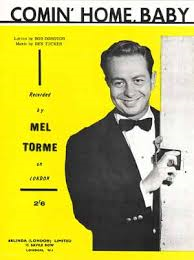 Musically, the verses of the song appear to be patterned after the 1962 Mel Torme hit “Comin' Home Baby,” which was substantially successful in Britain that year, peaking at #13. Otherwise, John had admitted to Yoko's influence on his new style of songwriting during that time. “This is very heavy,” George stated about the song in a 1969 interview. “This is good, because it's really basically a bit like a blues. The riff that he sings and plays is really a very basic blues-type thing. But again, it's very original to a John-type song. And the middle bit is great. John has an amazing thing with his timing. He always comes across with sort of different timing things. For example, 'All You Need Is Love,' which just sort of skips beats out and changes from three-four to four-four, all in and out of each other. But when you question him as to what it is, he doesn't know. He just does it naturally. And this has got - the bridge section of this is a bit like that. And it's got a really very good chord sequence that he uses.” Musically, the verses of the song appear to be patterned after the 1962 Mel Torme hit “Comin' Home Baby,” which was substantially successful in Britain that year, peaking at #13. Otherwise, John had admitted to Yoko's influence on his new style of songwriting during that time. “This is very heavy,” George stated about the song in a 1969 interview. “This is good, because it's really basically a bit like a blues. The riff that he sings and plays is really a very basic blues-type thing. But again, it's very original to a John-type song. And the middle bit is great. John has an amazing thing with his timing. He always comes across with sort of different timing things. For example, 'All You Need Is Love,' which just sort of skips beats out and changes from three-four to four-four, all in and out of each other. But when you question him as to what it is, he doesn't know. He just does it naturally. And this has got - the bridge section of this is a bit like that. And it's got a really very good chord sequence that he uses.”
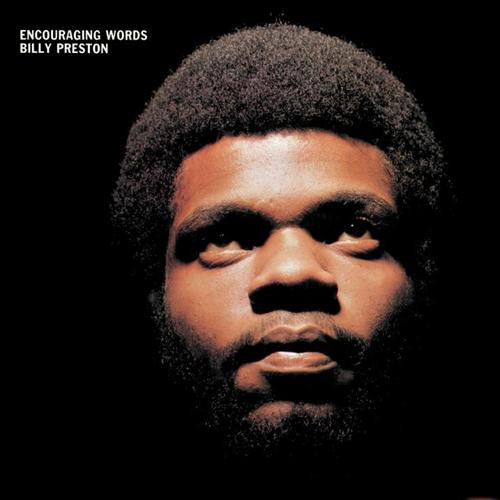 For readers who may be unclear as to what is meant by the word “heavy” in the context of the song's lyrics, the “'60s Slang” dictionary defines the word as “deep, cool, chaotic, controversial” and, as defined by Kevin Howlett in the "Track By Track" liner notes for the 50th Anniversary "Abbey Road" box set, "intense, meaningful, momentous." As for narrowing down the time of writing, by the time of its first official recording session on February 22nd, 1969, the song was composed in its completed form. This indicates the song as having been written between January and February of 1969. Paul has never claimed any part of the songwriting credit, but upon listening to the first run-through of the song on January 28th, 1969 in Apple Studios, keyboardist Billy Preston could be cited as having helped with the arrangement and fleshing out the feel of the song along with John on that day and thereafter. For readers who may be unclear as to what is meant by the word “heavy” in the context of the song's lyrics, the “'60s Slang” dictionary defines the word as “deep, cool, chaotic, controversial” and, as defined by Kevin Howlett in the "Track By Track" liner notes for the 50th Anniversary "Abbey Road" box set, "intense, meaningful, momentous." As for narrowing down the time of writing, by the time of its first official recording session on February 22nd, 1969, the song was composed in its completed form. This indicates the song as having been written between January and February of 1969. Paul has never claimed any part of the songwriting credit, but upon listening to the first run-through of the song on January 28th, 1969 in Apple Studios, keyboardist Billy Preston could be cited as having helped with the arrangement and fleshing out the feel of the song along with John on that day and thereafter.
Recording History
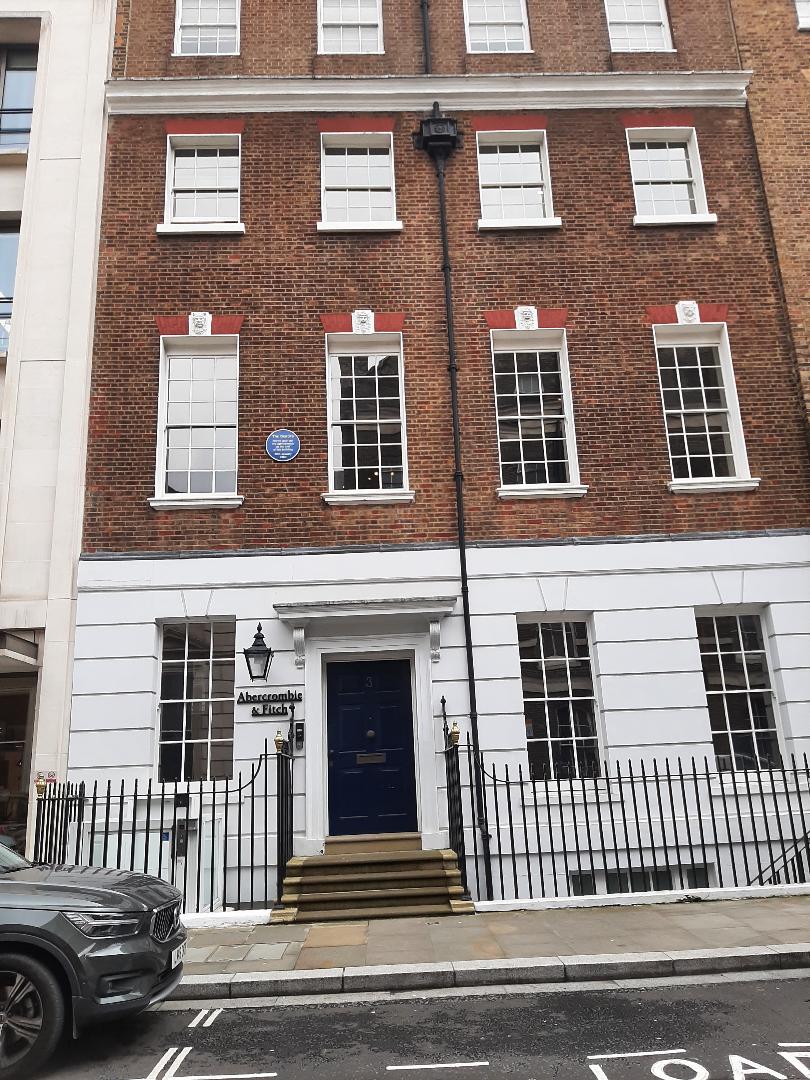 As mentioned above, January 28th, 1969 was the first day that John brought "I Want You (She's So Heavy)" to The Beatles in Apple Studio, 3 Savile Row, London. The group was then ending their month-long set of rehearsals for what eventually became the "Let It Be" album and film. Four versions of the song were rehearsed on this day, it being merely a jam at this point that consisted of the “I want you” verses only. One version features John on lead vocals mimicking the notes played on a distorted electric guitar, not unlike what ended up on the released version, Billy Preston on piano and response vocals, and Ringo on drums. This enjoyable funky version lasted nearly six minutes. Later that day, they rehearsed the song again with John alternating the lyrics from “I want you” to “I need you,” Billy Preston moving to organ and this time refraining from providing vocals, and Paul joining in with a shaker. Yet another rehearsal that day consisted of John and George jamming the song on guitar. As mentioned above, January 28th, 1969 was the first day that John brought "I Want You (She's So Heavy)" to The Beatles in Apple Studio, 3 Savile Row, London. The group was then ending their month-long set of rehearsals for what eventually became the "Let It Be" album and film. Four versions of the song were rehearsed on this day, it being merely a jam at this point that consisted of the “I want you” verses only. One version features John on lead vocals mimicking the notes played on a distorted electric guitar, not unlike what ended up on the released version, Billy Preston on piano and response vocals, and Ringo on drums. This enjoyable funky version lasted nearly six minutes. Later that day, they rehearsed the song again with John alternating the lyrics from “I want you” to “I need you,” Billy Preston moving to organ and this time refraining from providing vocals, and Paul joining in with a shaker. Yet another rehearsal that day consisted of John and George jamming the song on guitar.
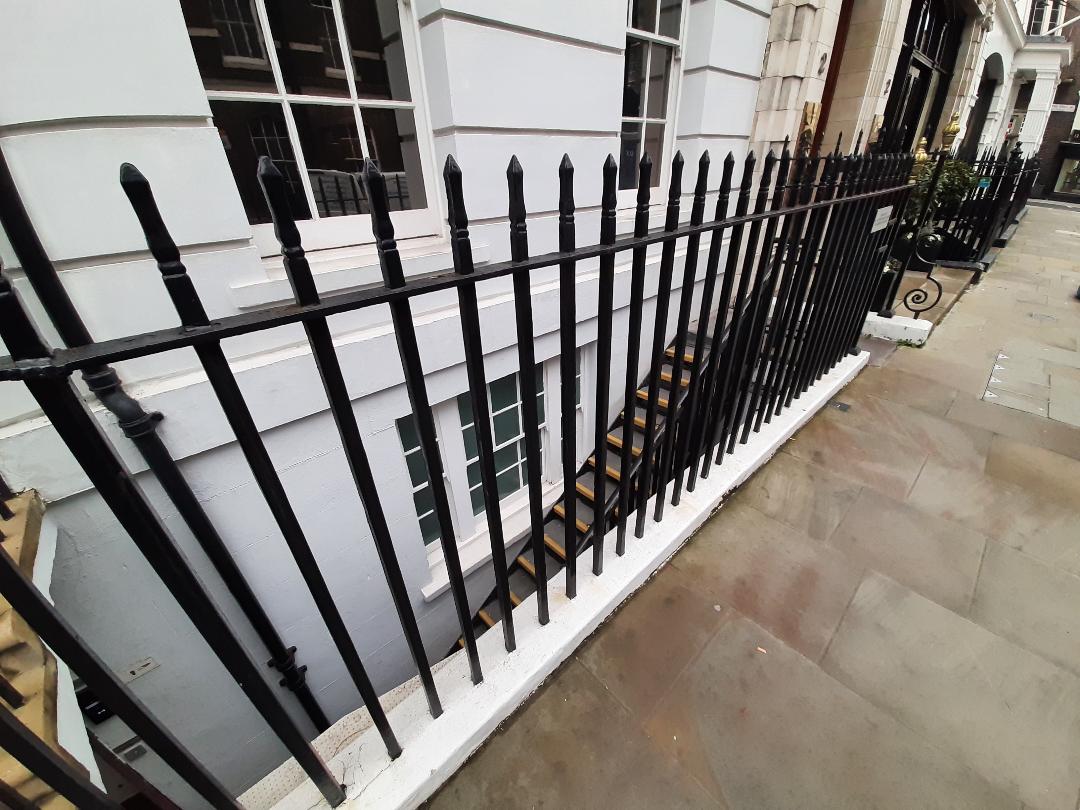 The following day, January 29th, 1969, they rehearsed “I Want You (She's So Heavy)” twice more in the basement studio at Apple Headquarters, one of which was a mostly instrumental jam with John again on distorted guitar but only singing briefly off microphone while George played his new Rosewood Telecaster and Paul played the Hofner Hawaiian lap steel guitar. Billy Preston, however, played keyboards and added some improvised lyrics inspired by Martin Luther Kings, Jr's famous “I had a dream” speech: "Black or white, we all deserve equal rights - I had a good dream, a very good dream..." etc. It was on this day, incidentally, that the decision was made to perform a few of their newly written and rehearsed songs on the roof of the Apple building the next day, although “I Want You (She's So Heavy)” was nowhere near ready at this point and was held off to be worked out more fully at a later time. However, this didn't stop John from briefly playing the “I Want You” guitar riff in between songs during the rooftop performance on January 30th, 1969. The following day, January 29th, 1969, they rehearsed “I Want You (She's So Heavy)” twice more in the basement studio at Apple Headquarters, one of which was a mostly instrumental jam with John again on distorted guitar but only singing briefly off microphone while George played his new Rosewood Telecaster and Paul played the Hofner Hawaiian lap steel guitar. Billy Preston, however, played keyboards and added some improvised lyrics inspired by Martin Luther Kings, Jr's famous “I had a dream” speech: "Black or white, we all deserve equal rights - I had a good dream, a very good dream..." etc. It was on this day, incidentally, that the decision was made to perform a few of their newly written and rehearsed songs on the roof of the Apple building the next day, although “I Want You (She's So Heavy)” was nowhere near ready at this point and was held off to be worked out more fully at a later time. However, this didn't stop John from briefly playing the “I Want You” guitar riff in between songs during the rooftop performance on January 30th, 1969.
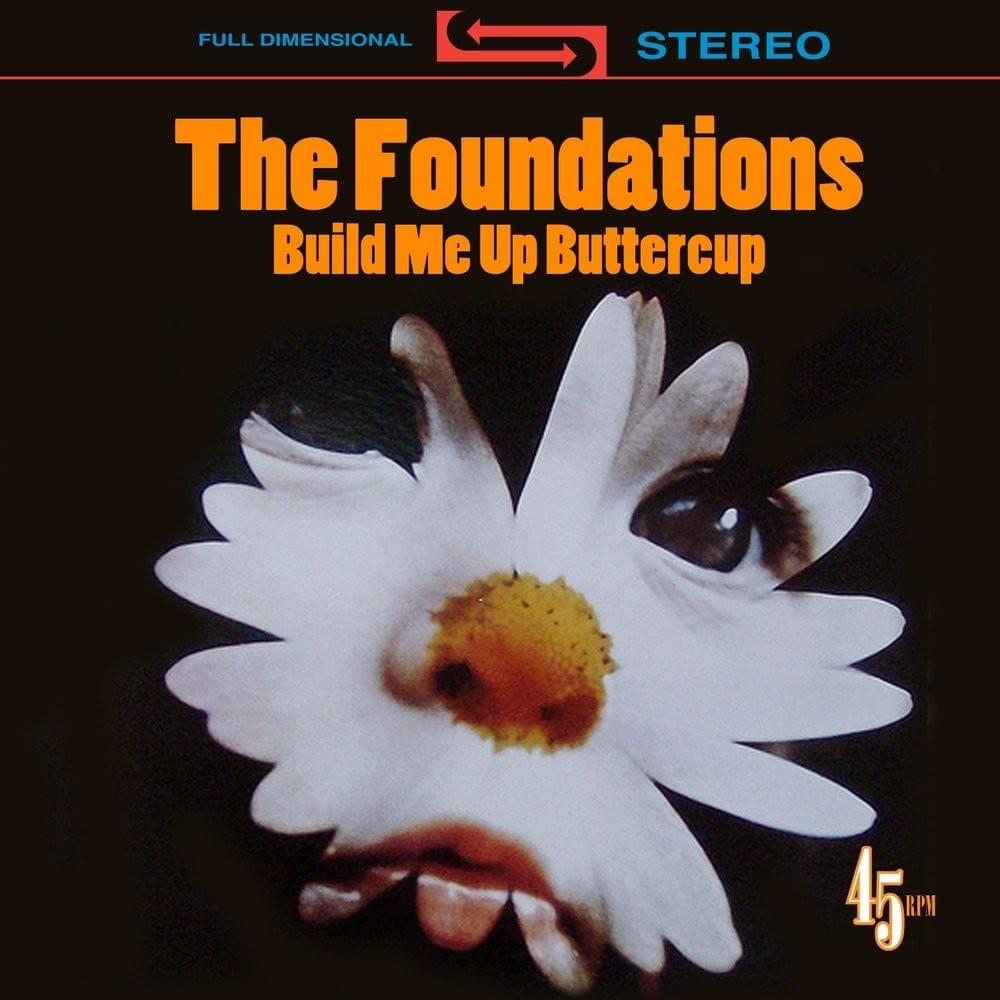 On the following day, January 31st, 1969, when they recorded and filmed the remainder of their new material as promo performances for what would eventually be the released “Let It Be” movie, they once again ran through what they had of “I Want You (She's So Heavy)” so far. Once they were done with the main songs that they wanted to set in stone, they ran through a good number of other compositions, such as “Lady Madonna,” “Oh! Darling,” The Foundations hit “Build Me Up Buttercup” and “I Want You (She's So Heavy).” The instrumentation this time around was John and George on guitar, Paul and Billy Preston on keyboards, and Ringo on drums, Paul occasionally chiming in with some vocals. On the following day, January 31st, 1969, when they recorded and filmed the remainder of their new material as promo performances for what would eventually be the released “Let It Be” movie, they once again ran through what they had of “I Want You (She's So Heavy)” so far. Once they were done with the main songs that they wanted to set in stone, they ran through a good number of other compositions, such as “Lady Madonna,” “Oh! Darling,” The Foundations hit “Build Me Up Buttercup” and “I Want You (She's So Heavy).” The instrumentation this time around was John and George on guitar, Paul and Billy Preston on keyboards, and Ringo on drums, Paul occasionally chiming in with some vocals.
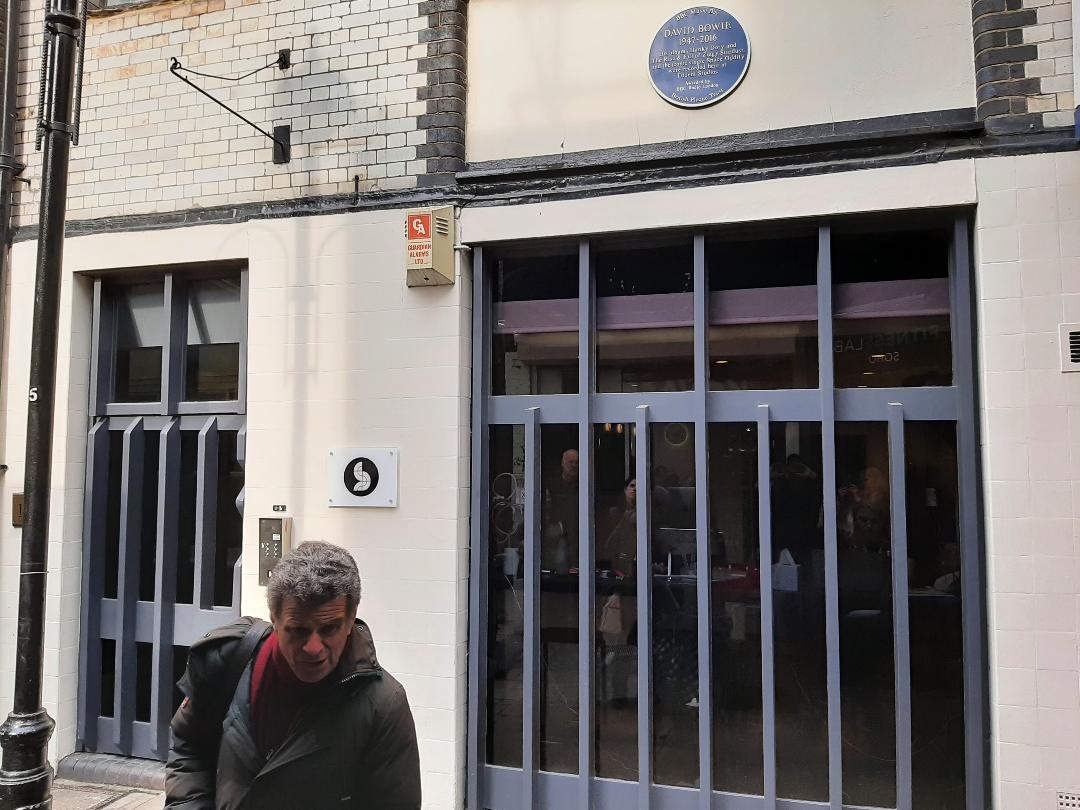 About three weeks later, on February 22nd, 1969, The Beatles entered Trident Studios in central London to start officially recording the song, which was simply titled “I Want You” at this point. John had fleshed out the arrangement to its finished state within the previous three weeks and now had enough confidence in the song to officially set it to tape. George Martin returned as producer for this session, although Glyn Johns, who had been hired to oversee the January "Get Back / Let It Be" sessions, was present on this day as well. About three weeks later, on February 22nd, 1969, The Beatles entered Trident Studios in central London to start officially recording the song, which was simply titled “I Want You” at this point. John had fleshed out the arrangement to its finished state within the previous three weeks and now had enough confidence in the song to officially set it to tape. George Martin returned as producer for this session, although Glyn Johns, who had been hired to oversee the January "Get Back / Let It Be" sessions, was present on this day as well.
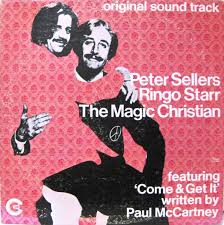 In their minds, the aforementioned “Get Back / Let It Be” sessions needed more material to get it to a finished state for release as an album. This was the first recording session they booked for supplying additional material for the project, Ringo being busy filming the movie “The Magic Christian,” George being hospitalized for the removal of his tonsils, and Glyn Johns recording The Steve Miller Band in Los Angeles earlier in February. This was the first chance they had to continue work on the album, Trident Studios being booked undoubtedly because of the borrowed recording equipment at Apple Studio being returned to EMI by this time, new electronics being installed at Savile Row by electronics whiz Alexis Mardas (affectionately referred to as "Magic Alex") during February. Likewise, EMI Studios may well have been previously booked for this day. In their minds, the aforementioned “Get Back / Let It Be” sessions needed more material to get it to a finished state for release as an album. This was the first recording session they booked for supplying additional material for the project, Ringo being busy filming the movie “The Magic Christian,” George being hospitalized for the removal of his tonsils, and Glyn Johns recording The Steve Miller Band in Los Angeles earlier in February. This was the first chance they had to continue work on the album, Trident Studios being booked undoubtedly because of the borrowed recording equipment at Apple Studio being returned to EMI by this time, new electronics being installed at Savile Row by electronics whiz Alexis Mardas (affectionately referred to as "Magic Alex") during February. Likewise, EMI Studios may well have been previously booked for this day.
 The Beatles arrived at 8 pm for this session, determined to play loudly, or 'heavier' than usual, to match the feel that John wanted for this song. They ran through 35 takes of "I Want You (She's So Heavy)," many of them breaking down midway through, which filled up three reels of eight-track tape in the process. The instrumentation comprised John on guitar (track one), Ringo on drums (tracks two and three), George on guitar (track four), Paul on bass (track five) and John's lead vocals (track seven). Mark Lewisohn's book "The Beatles Recording Sessions" stipulates that Billy Preston contributed to this session but, as evidenced by a segment of one of these takes as included on various editions of the 50th Anniversary of "Abbey Road," the keyboardist appears not to have been present on this day. The Beatles decided to make good use of the eight-track recording equipment by allocating different elements of Ringo's drums to two tracks, thereby being able to present his playing in stereo on the finished product in order to create a fuller sound. Although John sang lead on most of the takes, Paul experimented as lead vocalist on one of them. The Beatles arrived at 8 pm for this session, determined to play loudly, or 'heavier' than usual, to match the feel that John wanted for this song. They ran through 35 takes of "I Want You (She's So Heavy)," many of them breaking down midway through, which filled up three reels of eight-track tape in the process. The instrumentation comprised John on guitar (track one), Ringo on drums (tracks two and three), George on guitar (track four), Paul on bass (track five) and John's lead vocals (track seven). Mark Lewisohn's book "The Beatles Recording Sessions" stipulates that Billy Preston contributed to this session but, as evidenced by a segment of one of these takes as included on various editions of the 50th Anniversary of "Abbey Road," the keyboardist appears not to have been present on this day. The Beatles decided to make good use of the eight-track recording equipment by allocating different elements of Ringo's drums to two tracks, thereby being able to present his playing in stereo on the finished product in order to create a fuller sound. Although John sang lead on most of the takes, Paul experimented as lead vocalist on one of them.
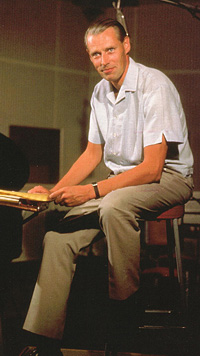 As witnessed on the above mentioned segment included with the 50th Anniversary of "Abbey Road," we hear one of these takes falling apart, prompting John to suggest piecing multiple takes together to create a definitive rhythm track. "It's a case of half of one and two in the other," Lennon remarks. He then asks his producer, "What's it a case of, Mr. Martin?" "Take four was very good up to the breakdown," George Martin answers. "Which was take four?", John interrupts. George Martin continues: "...and it was very good up to the very end there when Paul did his little bit that wasn't all that right." Lennon then shouts, "My boys are ready to go!" As witnessed on the above mentioned segment included with the 50th Anniversary of "Abbey Road," we hear one of these takes falling apart, prompting John to suggest piecing multiple takes together to create a definitive rhythm track. "It's a case of half of one and two in the other," Lennon remarks. He then asks his producer, "What's it a case of, Mr. Martin?" "Take four was very good up to the breakdown," George Martin answers. "Which was take four?", John interrupts. George Martin continues: "...and it was very good up to the very end there when Paul did his little bit that wasn't all that right." Lennon then shouts, "My boys are ready to go!"
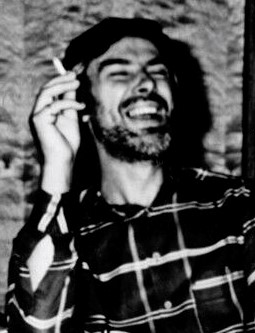 Associate producer Glyn John shyly injects "John?" Lennon replies, "Yes, what?" Glyn diplomatically asks, "John, is it possible without affecting yourselves too much to turn down a little? Apparently, there's been a complaint." John: "From who?" Glyn: "From somebody outside the building." John: "What are they doing here at this time of night? What guy?" Paul: "It's his own fault for getting a house in such a lousy district." John: "Well, we'll try it once more very loud, and then if we don't get it, we'll try it quiet, like it might do it the other way. Ok. The loud one, last go. Last chance to be loud." Paul: "Who says?" John, referring to focusing on the lyrics through his glasses: "Can't quite see through these now. I just can't quite see 'em; they keep merging." He then counts off yet a further take of the song, which sounds coherent enough musically although John's voice sounded quite rough by that time of the evening. By 5 am the following morning, they were happy enough with the results to call it a night. Associate producer Glyn John shyly injects "John?" Lennon replies, "Yes, what?" Glyn diplomatically asks, "John, is it possible without affecting yourselves too much to turn down a little? Apparently, there's been a complaint." John: "From who?" Glyn: "From somebody outside the building." John: "What are they doing here at this time of night? What guy?" Paul: "It's his own fault for getting a house in such a lousy district." John: "Well, we'll try it once more very loud, and then if we don't get it, we'll try it quiet, like it might do it the other way. Ok. The loud one, last go. Last chance to be loud." Paul: "Who says?" John, referring to focusing on the lyrics through his glasses: "Can't quite see through these now. I just can't quite see 'em; they keep merging." He then counts off yet a further take of the song, which sounds coherent enough musically although John's voice sounded quite rough by that time of the evening. By 5 am the following morning, they were happy enough with the results to call it a night.
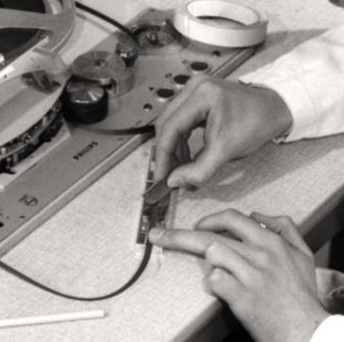 At 6:30 pm the following day, February 23rd, 1969, they returned to Trident Studios to listen to what they had recorded of the song the previous day and decide what to use. A decision was made to edit segments of three different takes to form one official master take. "Take nine" had the best Lennon vocal for the early part of the song, "take 20" had the best middle section, or bridge, and "take 32" was deemed best for the remainder of the track. George Martin, Glyn Johns and engineer Barry Sheffield edited those takes together appropriately and then prepared a rough mono mix for John to take home and listen to. At midnight, all left for the night, possibly thinking they had a finished song. At 6:30 pm the following day, February 23rd, 1969, they returned to Trident Studios to listen to what they had recorded of the song the previous day and decide what to use. A decision was made to edit segments of three different takes to form one official master take. "Take nine" had the best Lennon vocal for the early part of the song, "take 20" had the best middle section, or bridge, and "take 32" was deemed best for the remainder of the track. George Martin, Glyn Johns and engineer Barry Sheffield edited those takes together appropriately and then prepared a rough mono mix for John to take home and listen to. At midnight, all left for the night, possibly thinking they had a finished song.
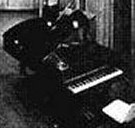 On the next day, February 24th, 1969, time unknown, The Beatles returned to Trident Studios to attempt recording overdubs on "I Want You." Two piano parts were recorded, along with more guitars, a tambourine, and some "backwards cymbal," this being recorded with the tape reversed. These overdubs were inevitably scrapped, while engineer Barry Sheffield made an eight-track safety copy of the edited rhythm track of the song as assembled the day before, this undoubtedly being the copy used by The Beatles for future overdubs on the song in EMI Studios. On the next day, February 24th, 1969, time unknown, The Beatles returned to Trident Studios to attempt recording overdubs on "I Want You." Two piano parts were recorded, along with more guitars, a tambourine, and some "backwards cymbal," this being recorded with the tape reversed. These overdubs were inevitably scrapped, while engineer Barry Sheffield made an eight-track safety copy of the edited rhythm track of the song as assembled the day before, this undoubtedly being the copy used by The Beatles for future overdubs on the song in EMI Studios.
 Interestingly, a reel of tape has been unearthed in the EMI library that contains a "New Mixer Tape" of The Beatles performing a faster version of "I Want You" which has been documented to have been recorded on this same day, February 24th, 1969. With clicks, tones and hums permeating the tracks, this 6:23 recording appears to be an impromptu jam by the group in order for new equipment to be tested, possibly at Apple Studios under the guidance of "Magic Alex." Interestingly, a reel of tape has been unearthed in the EMI library that contains a "New Mixer Tape" of The Beatles performing a faster version of "I Want You" which has been documented to have been recorded on this same day, February 24th, 1969. With clicks, tones and hums permeating the tracks, this 6:23 recording appears to be an impromptu jam by the group in order for new equipment to be tested, possibly at Apple Studios under the guidance of "Magic Alex."
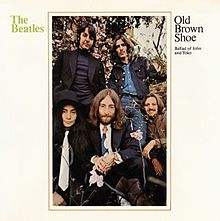 The recording of “I Want You” was put on hold for the next month and a half, only sporadic recording being done by the group during this time, the most noteworthy being both sides of their latest single, namely, “The Ballad Of John And Yoko” and “Old Brown Shoe.” In the early morning hours of April 19th, 1969, after putting the final touches on “Old Brown Shoe” in EMI Studio Three the evening before, John and George, along with producer Chris Thomas and the engineering staff, entered EMI Studio Two at 1 am with the intention of performing overdubs on the Trident master tape of “I Want You.” “John and George went into the far left-hand corner of number two to overdub those guitars,” engineer Jeff Jarratt recalls. “They wanted a massive sound so they kept tracking and tracking, over and over...I was getting a bit of pick-up so I asked George to turn it down a little. He looked at me and said, dryly, 'You don't talk to a Beatle like that.'” The recording of “I Want You” was put on hold for the next month and a half, only sporadic recording being done by the group during this time, the most noteworthy being both sides of their latest single, namely, “The Ballad Of John And Yoko” and “Old Brown Shoe.” In the early morning hours of April 19th, 1969, after putting the final touches on “Old Brown Shoe” in EMI Studio Three the evening before, John and George, along with producer Chris Thomas and the engineering staff, entered EMI Studio Two at 1 am with the intention of performing overdubs on the Trident master tape of “I Want You.” “John and George went into the far left-hand corner of number two to overdub those guitars,” engineer Jeff Jarratt recalls. “They wanted a massive sound so they kept tracking and tracking, over and over...I was getting a bit of pick-up so I asked George to turn it down a little. He looked at me and said, dryly, 'You don't talk to a Beatle like that.'”
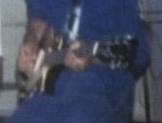 Having filled up all of the open tracks on the eight-track safety copy of the Trident master with overdubbed guitars during the final hypnotic minutes of the song, the engineering staff needed to make a reduction mix of the tape, called 'take one,' in order to open up yet more tracks for overdubbing. At this point, John's original guitar from the rhythm track was combined together with his lead vocal on track eight of the tape. This being done, John and George, on their Epiphone Casino and Gibson Les Paul respectively, once again huddled in the corner of the studio to overdub yet more guitars onto this final section of the song. After they were sufficiently happy with the results, or they were tired enough, they called it for the night, allowing the engineering staff to make a stereo mix of the song as it stood thus far. Possibly thinking that the song was now complete, the studio finally closed its doors at 4:30 am. Having filled up all of the open tracks on the eight-track safety copy of the Trident master with overdubbed guitars during the final hypnotic minutes of the song, the engineering staff needed to make a reduction mix of the tape, called 'take one,' in order to open up yet more tracks for overdubbing. At this point, John's original guitar from the rhythm track was combined together with his lead vocal on track eight of the tape. This being done, John and George, on their Epiphone Casino and Gibson Les Paul respectively, once again huddled in the corner of the studio to overdub yet more guitars onto this final section of the song. After they were sufficiently happy with the results, or they were tired enough, they called it for the night, allowing the engineering staff to make a stereo mix of the song as it stood thus far. Possibly thinking that the song was now complete, the studio finally closed its doors at 4:30 am.
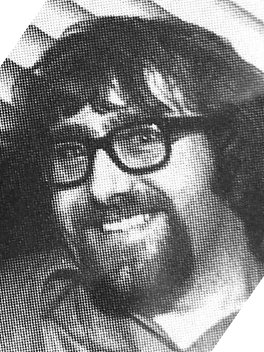 It was determined that more was yet needed to finish off “I Want You,” the April 20th, 1969 session being partially utilized for this purpose. The Beatles arrived in EMI Studio Three at around 7 pm, along with roadie Mal Evans with a set of conga drums, for them to be played as an overdub onto the song, undoubtedly by Ringo. Also overdubbed onto the song was Billy Preston on Hammond organ, his keyboard work being combined with Ringo's conga drums and other percussion onto track six of the tape. Billy's organ work actually continues to permeate the soundscape throughout the final minutes of the song, although this was eventually omitted from the final mix. This being accomplished by approximately 8 pm, the assumption probably being made yet again that the song was complete, attention turned to recording the basic tracks for Paul's song “Oh! Darling,” this taking up the remainder of the sessions which ended at 12:45 am the following morning. It was determined that more was yet needed to finish off “I Want You,” the April 20th, 1969 session being partially utilized for this purpose. The Beatles arrived in EMI Studio Three at around 7 pm, along with roadie Mal Evans with a set of conga drums, for them to be played as an overdub onto the song, undoubtedly by Ringo. Also overdubbed onto the song was Billy Preston on Hammond organ, his keyboard work being combined with Ringo's conga drums and other percussion onto track six of the tape. Billy's organ work actually continues to permeate the soundscape throughout the final minutes of the song, although this was eventually omitted from the final mix. This being accomplished by approximately 8 pm, the assumption probably being made yet again that the song was complete, attention turned to recording the basic tracks for Paul's song “Oh! Darling,” this taking up the remainder of the sessions which ended at 12:45 am the following morning.
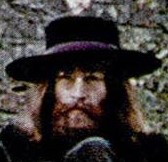 It was decided, just prior to July 1st, 1969, that The Beatles would record and release one final album that would encompass songs they had been recording early that year, “I Want You” being a prime candidate. After John had introduced various other songs for inclusion on this final album, as well as other songs from the other band members, John thought that more touching up needed to be done on “I Want You.” Therefore, with a deadline looming, a decision was made to add more overdubs onto the dramatic ending of the song on August 8th, 1969. It was decided, just prior to July 1st, 1969, that The Beatles would record and release one final album that would encompass songs they had been recording early that year, “I Want You” being a prime candidate. After John had introduced various other songs for inclusion on this final album, as well as other songs from the other band members, John thought that more touching up needed to be done on “I Want You.” Therefore, with a deadline looming, a decision was made to add more overdubs onto the dramatic ending of the song on August 8th, 1969.
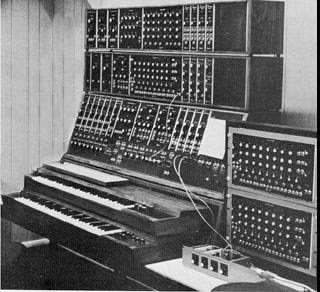 After they took the famous “Abbey Road” album cover in the morning hours of the day, they entered EMI Studio Two at 2:30 pm and began by adding some overdubs to the song “The End” before giving attention to “I Want You.” “Later that day, we continued the work at hand,” engineer Geoff Emerick recalls. “George set up the Moog synthesizer at John's request and twiddled the knobs as the great behemoth spit out white noise, tacked onto the end of 'I Want You (She's So Heavy).'” John explained in 1969: "It's pretty heavy at the ending, you know, because we used the Moog synthesizers on it, and the range of the sound is from minus whatever to way over...Well, you can't hear it. That instrument, the Moog synthesizer, can do all the sounds, you know, all ranges of sounds, and we did that on the end. If you're a dog, you can hear a lot more." Ringo also added some spectacular cymbal crashes, among other things, to the dramatic ending of the song, while Paul escaped to Studio Three to add some overdubs on his song “Oh! Darling.” After they took the famous “Abbey Road” album cover in the morning hours of the day, they entered EMI Studio Two at 2:30 pm and began by adding some overdubs to the song “The End” before giving attention to “I Want You.” “Later that day, we continued the work at hand,” engineer Geoff Emerick recalls. “George set up the Moog synthesizer at John's request and twiddled the knobs as the great behemoth spit out white noise, tacked onto the end of 'I Want You (She's So Heavy).'” John explained in 1969: "It's pretty heavy at the ending, you know, because we used the Moog synthesizers on it, and the range of the sound is from minus whatever to way over...Well, you can't hear it. That instrument, the Moog synthesizer, can do all the sounds, you know, all ranges of sounds, and we did that on the end. If you're a dog, you can hear a lot more." Ringo also added some spectacular cymbal crashes, among other things, to the dramatic ending of the song, while Paul escaped to Studio Three to add some overdubs on his song “Oh! Darling.”
 Curiously, these “I Want You” overdubs were performed onto the original composite rhythm track recording from Trident Studios in February, not the version that included the organ, conga drums and percussion that were overdubbed in April in EMI Studio Three. Nonetheless, the sessions on this day were over by approximately 9:45 pm. “We ended the session fairly early,” Geoff Emerick continues. “There was a summer weekend ahead, and we all had plans. I was going fishing.” Curiously, these “I Want You” overdubs were performed onto the original composite rhythm track recording from Trident Studios in February, not the version that included the organ, conga drums and percussion that were overdubbed in April in EMI Studio Three. Nonetheless, the sessions on this day were over by approximately 9:45 pm. “We ended the session fairly early,” Geoff Emerick continues. “There was a summer weekend ahead, and we all had plans. I was going fishing.”
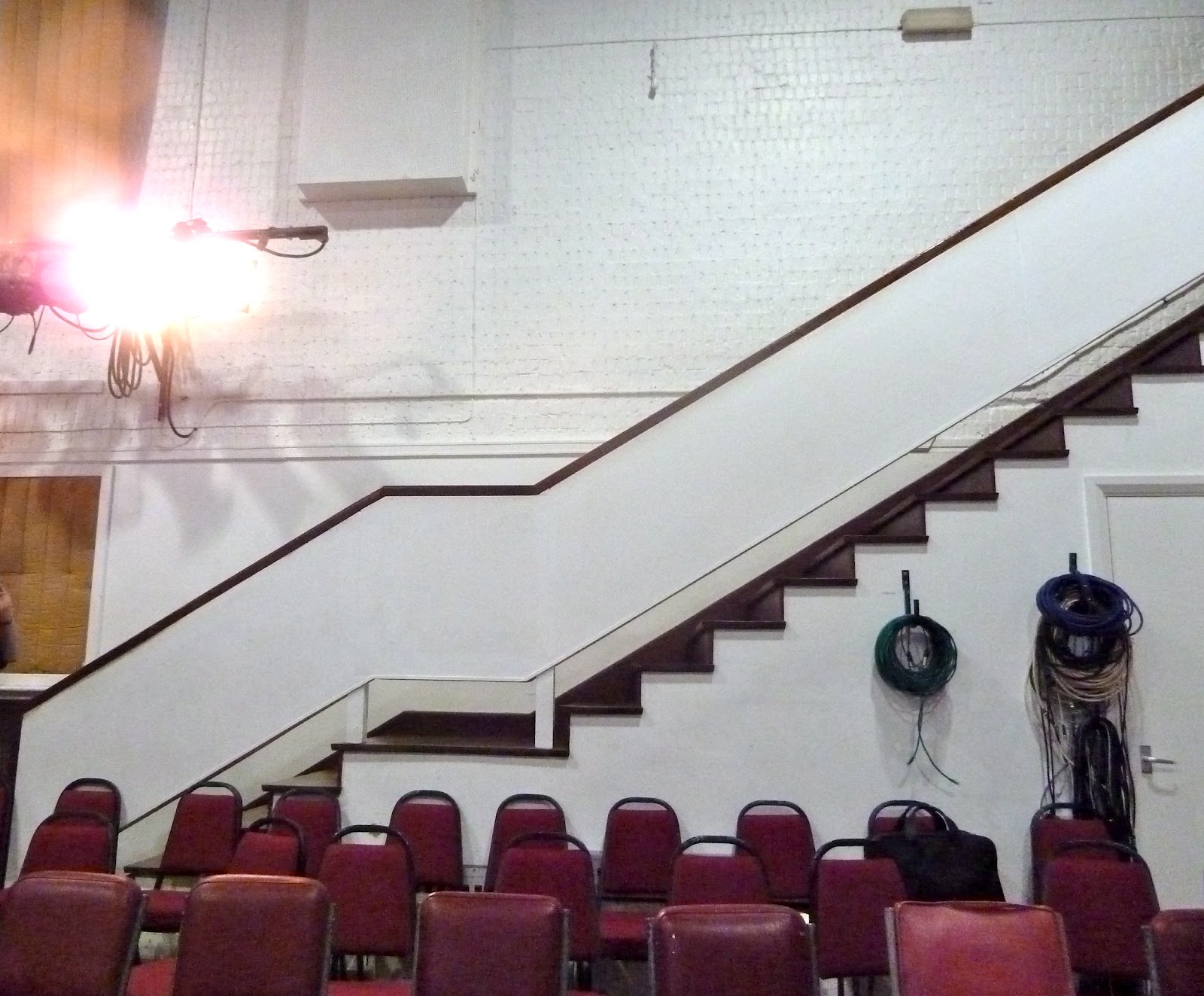 After the summer weekend was over, The Beatles met again in EMI Studio Two on August 11th, 1969 at 2:30 pm for more work on what became their “Abbey Road” album. They arrived at EMI Studio Two around 2:30 pm and began with overdubs on the song that only now was called “I Want You (She's So Heavy)” instead of just “I Want You.” After the summer weekend was over, The Beatles met again in EMI Studio Two on August 11th, 1969 at 2:30 pm for more work on what became their “Abbey Road” album. They arrived at EMI Studio Two around 2:30 pm and began with overdubs on the song that only now was called “I Want You (She's So Heavy)” instead of just “I Want You.”
 One of the overdubs performed on this day was the harmony vocals of John, Paul and George on the phrase “she's so heavy,” which were recorded onto tracks four and seven of the April 18th "take one" reduction mixdown. With the addition of these harmonies, John appropriately decided that these words should actually be added to the title of the song on the record sleeve. This was then overdubbed to become what Mark Lewisohn's book “The Beatles Recording Sessions” calls “tremendous harmony vocals.” This basically completed the recording of the song which resulted in a tape copy being made but, as noted above, the "white noise" Moog synthesizer effect was included only on the composite rhythm track recorded at Trident Studios back in February. Since John couldn't decided at this point which version of the song should appear on the album, or if an edit should be performed to combine the two, he had the “she's so heavy” harmony vocals edited into the other version as well. After overdubs on other recently recorded songs were accomplished, the session ended around 11:30 pm. One of the overdubs performed on this day was the harmony vocals of John, Paul and George on the phrase “she's so heavy,” which were recorded onto tracks four and seven of the April 18th "take one" reduction mixdown. With the addition of these harmonies, John appropriately decided that these words should actually be added to the title of the song on the record sleeve. This was then overdubbed to become what Mark Lewisohn's book “The Beatles Recording Sessions” calls “tremendous harmony vocals.” This basically completed the recording of the song which resulted in a tape copy being made but, as noted above, the "white noise" Moog synthesizer effect was included only on the composite rhythm track recorded at Trident Studios back in February. Since John couldn't decided at this point which version of the song should appear on the album, or if an edit should be performed to combine the two, he had the “she's so heavy” harmony vocals edited into the other version as well. After overdubs on other recently recorded songs were accomplished, the session ended around 11:30 pm.
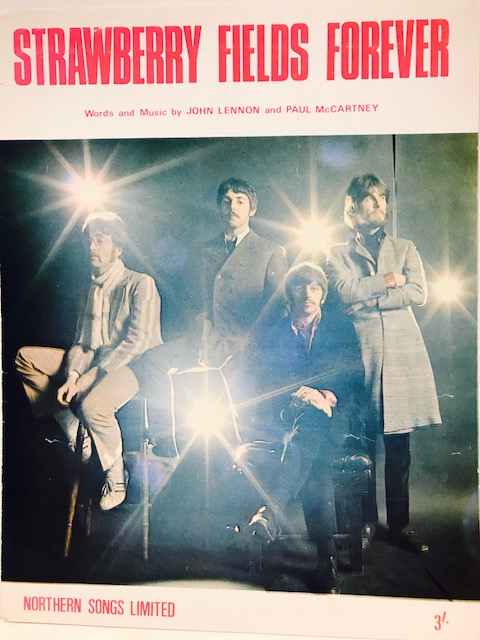 By August 20th, 1969, John came to a decision as to what to do about the different versions of “I Want You (She's So Heavy)” that existed at that time. Since he liked elements of both, his decision was to edit segments of them together. “In the end, Lennon had me edit together two of them,” Geoff Emerick explains in his book “Here, There And Everywhere.” “The splice comes right after his last 'She's so...' It was like working on “Strawberry Fields Forever” all over again, but this time around, thankfully, both takes were in the same key and at the same tempo.” By August 20th, 1969, John came to a decision as to what to do about the different versions of “I Want You (She's So Heavy)” that existed at that time. Since he liked elements of both, his decision was to edit segments of them together. “In the end, Lennon had me edit together two of them,” Geoff Emerick explains in his book “Here, There And Everywhere.” “The splice comes right after his last 'She's so...' It was like working on “Strawberry Fields Forever” all over again, but this time around, thankfully, both takes were in the same key and at the same tempo.”
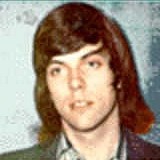 The Beatles met in the control room of EMI Studio Three at 2:30 pm with producer George Martin and engineers Geoff Emerick, Phil McDonald and Alan Parsons to get this done. This entailed creating a stereo mix of "take one" (eight attempts being made) as well as the Trident Studio master (two attempts being made) and then editing them together at the proper place. The Beatles met in the control room of EMI Studio Three at 2:30 pm with producer George Martin and engineers Geoff Emerick, Phil McDonald and Alan Parsons to get this done. This entailed creating a stereo mix of "take one" (eight attempts being made) as well as the Trident Studio master (two attempts being made) and then editing them together at the proper place.
 Another overdub was recorded on this song as well onto the original Trident master tape, as outlined in Geoff Emerick's book “Here, There And Everywhere.” “The remainder of the week was spent doing final mixing and sequencing. Despite the presence of most of The Beatles most of the time, everything went uneventfully, until the day it came to tackling John's 'I Want You (She's So Heavy).' Lennon was so enamored of the white noise that George Harrison had overdubbed from his Moog synthesizer that he actually had Ringo supplement it by spinning the wind machine secreted in the Studio Two percussion cupboard. As we sat in the control room mixing the track, he started becoming almost obsessed with the sound. 'Louder! Louder!!' he kept imploring me. 'I want the track to build and build and build,' he explained, 'and then I want the white noise to completely take over and blot out the music altogether.'” Another overdub was recorded on this song as well onto the original Trident master tape, as outlined in Geoff Emerick's book “Here, There And Everywhere.” “The remainder of the week was spent doing final mixing and sequencing. Despite the presence of most of The Beatles most of the time, everything went uneventfully, until the day it came to tackling John's 'I Want You (She's So Heavy).' Lennon was so enamored of the white noise that George Harrison had overdubbed from his Moog synthesizer that he actually had Ringo supplement it by spinning the wind machine secreted in the Studio Two percussion cupboard. As we sat in the control room mixing the track, he started becoming almost obsessed with the sound. 'Louder! Louder!!' he kept imploring me. 'I want the track to build and build and build,' he explained, 'and then I want the white noise to completely take over and blot out the music altogether.'”
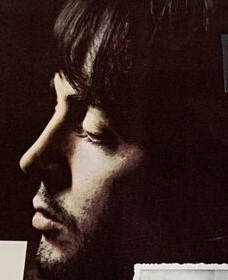 Geoff Emerick continues: “I looked over at John as though he were crazy, but he paid me no mind. Over one shoulder I could see Yoko smiling a taut little smile, her tiny teeth gleaming in the light. Over the other, I could see a dejected Paul, sitting slumped over, head down, staring at the floor. He didn't say a word, but his body language made it clear that he was very unhappy, not only with the song itself, but with the idea that the music – Beatles music, which he considered almost sacred – was being obliterated with noise. In the past, he would have said something – perhaps just a diplomatic 'Don't you think that's a bit too much, John?' - but now Paul seemed too beaten down to argue the point with a gleeful Lennon, who seemed to be taking an almost perverse pleasure at his bandmates's obvious discomfort.” Geoff Emerick continues: “I looked over at John as though he were crazy, but he paid me no mind. Over one shoulder I could see Yoko smiling a taut little smile, her tiny teeth gleaming in the light. Over the other, I could see a dejected Paul, sitting slumped over, head down, staring at the floor. He didn't say a word, but his body language made it clear that he was very unhappy, not only with the song itself, but with the idea that the music – Beatles music, which he considered almost sacred – was being obliterated with noise. In the past, he would have said something – perhaps just a diplomatic 'Don't you think that's a bit too much, John?' - but now Paul seemed too beaten down to argue the point with a gleeful Lennon, who seemed to be taking an almost perverse pleasure at his bandmates's obvious discomfort.”
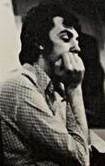 “To Paul, it must have been like 'Revolution 9' all over again. John was deliberately distorting Beatles music, trying to turn the group into an avant-garde ensemble instead of a pop band. I looked around the room. Ringo and George Harrison seemed to be into what John was doing – they had their eyes closed and were swaying to the beat. It was just Paul looking miserable, staring down at the floor. His isolation from the others never seemed more apparent.” “To Paul, it must have been like 'Revolution 9' all over again. John was deliberately distorting Beatles music, trying to turn the group into an avant-garde ensemble instead of a pop band. I looked around the room. Ringo and George Harrison seemed to be into what John was doing – they had their eyes closed and were swaying to the beat. It was just Paul looking miserable, staring down at the floor. His isolation from the others never seemed more apparent.”
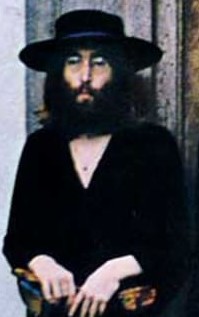 “The white noise was a great effect, though the way that it just kept building and building rubbed me up the wrong way, both sonically and aesthetically. But it was John's song, and it was going to be done John's way, no matter what Paul or I – or anyone, for that matter – thought.” Mark Lewisohn explains in the book “The Beatles Recording Sessions”: “It was to cause EMI engineers great concern in 1987 when they were digitally remastering 'Abbey Road' for release on compact disc. On record the noise was tolerable but with the increased dynamic range of CD it posed a real problem.” “The white noise was a great effect, though the way that it just kept building and building rubbed me up the wrong way, both sonically and aesthetically. But it was John's song, and it was going to be done John's way, no matter what Paul or I – or anyone, for that matter – thought.” Mark Lewisohn explains in the book “The Beatles Recording Sessions”: “It was to cause EMI engineers great concern in 1987 when they were digitally remastering 'Abbey Road' for release on compact disc. On record the noise was tolerable but with the increased dynamic range of CD it posed a real problem.”
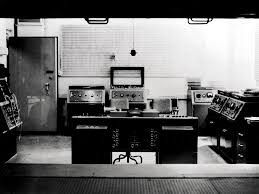 The mixing and editing of the song was complete by 6 pm on this day, this becoming the finished stereo master that appeared on the “Abbey Road” album. Then they all immediately relocated to the control room of EMI Studio Two in order to band together the songs in the right order and create tape copies of what would be the released album. Once again, John's instructions concerning “I Want You (She's So Heavy)” were groundbreaking. The mixing and editing of the song was complete by 6 pm on this day, this becoming the finished stereo master that appeared on the “Abbey Road” album. Then they all immediately relocated to the control room of EMI Studio Two in order to band together the songs in the right order and create tape copies of what would be the released album. Once again, John's instructions concerning “I Want You (She's So Heavy)” were groundbreaking.
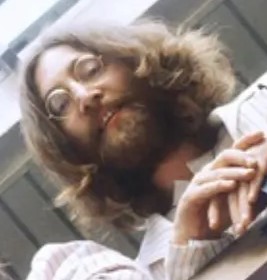 “And then there was the matter of how the song would end,” Geoff Emerick continues. “When they recorded the backing track, The Beatles had just played on and on, with no definitive conclusion, so I assumed I would be doing a fade-out. John had other ideas, though. He let the tape play until just twenty seconds or so before the take broke down, and then all of a sudden he barked out an order: 'Cut the tape here.'” “And then there was the matter of how the song would end,” Geoff Emerick continues. “When they recorded the backing track, The Beatles had just played on and on, with no definitive conclusion, so I assumed I would be doing a fade-out. John had other ideas, though. He let the tape play until just twenty seconds or so before the take broke down, and then all of a sudden he barked out an order: 'Cut the tape here.'”
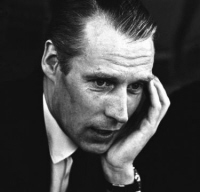 “'Cut the tape?' I asked, astonished. We had never ended a song that way, and an abrupt ending like that didn't make any sense unless the track was going to run directly into another one. But that wasn't the case here, because it had already been decided that 'I Want You' would close side one of the album. My protestations had no impact on John: his decision was absolute. 'You heard what I said, Geoff; cut the tape.' I glanced over at George Martin, who simply shrugged his shoulders, so I got out the scissors and sliced the tape at precisely the point John indicated...and that's the way side one of 'Abbey Road' ends. At the time, I though he was out of his mind, but due to the shock factor it ended up being incredibly effective, a Lennon concept that really worked.” “'Cut the tape?' I asked, astonished. We had never ended a song that way, and an abrupt ending like that didn't make any sense unless the track was going to run directly into another one. But that wasn't the case here, because it had already been decided that 'I Want You' would close side one of the album. My protestations had no impact on John: his decision was absolute. 'You heard what I said, Geoff; cut the tape.' I glanced over at George Martin, who simply shrugged his shoulders, so I got out the scissors and sliced the tape at precisely the point John indicated...and that's the way side one of 'Abbey Road' ends. At the time, I though he was out of his mind, but due to the shock factor it ended up being incredibly effective, a Lennon concept that really worked.”
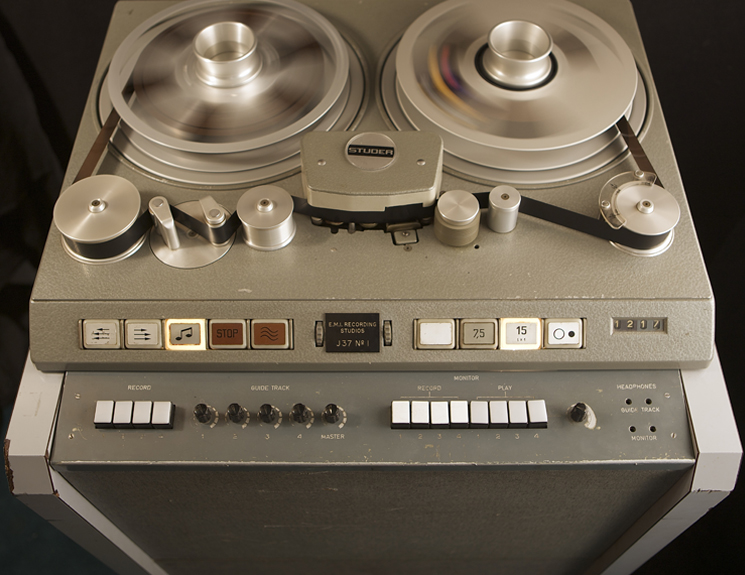 So, to recap, according to the book “The Beatles Recording Sessions”: “The finished article has 'take one' for the first 4:37 and the original Trident tape for the remaining 3:07, the break occurring after the vocal line 'she's so...'...Actually, the tape would have run out at 8:04 but the suddenness of the ending was powerful." From listening to the unedited version of the song contained in various 50th Anniversary editions of "Abbey Road," the tape was cut precisely when Ringo plays his last beat on the drums, Billy Preston's organ and John and George's mountainous guitar overdubs continuing on for a few more seconds until someone shouts "Woooh!” So, to recap, according to the book “The Beatles Recording Sessions”: “The finished article has 'take one' for the first 4:37 and the original Trident tape for the remaining 3:07, the break occurring after the vocal line 'she's so...'...Actually, the tape would have run out at 8:04 but the suddenness of the ending was powerful." From listening to the unedited version of the song contained in various 50th Anniversary editions of "Abbey Road," the tape was cut precisely when Ringo plays his last beat on the drums, Billy Preston's organ and John and George's mountainous guitar overdubs continuing on for a few more seconds until someone shouts "Woooh!”
In fact, at this point there were two variations of the running order of the album, sides one and two being reversed being one of them. If this ended up being the case, the abrupt ending of “I Want You (She's So Heavy)” would have been the final ending of, not only the “Abbey Road” album, but the entire Beatles recording career as we know it.
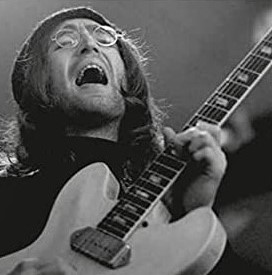 Another matter that needs to be addressed concerning the song is John's scream “Yeeaahhh!” at 4:32 in the song, which is the loudest point of the entire album and which audibly distorts, something that EMI engineers usually work hard to avoid. The book “The Beatles Recording Sessions” explains: “There remains to this day a myth about 'I Want You (She's So Heavy)': that one can hear a muffled shout of disapproval from the control room after John Lennon, all but tearing his larynx to pieces, shouts...during the recording...the inference being that someone was instructing John to keep his voice down. Never, never, would anyone have issued such an instruction about a vocal in such a fashion! Close scrutiny of the original Trident tape reveals the indecipherable shout to belong to a fellow Beatle, off-microphone, taped on 22 February, and that it was certainly not one of disapproval.” So much for the rumor of my teenage years that someone was yelling for John to “Shut Up!” Another matter that needs to be addressed concerning the song is John's scream “Yeeaahhh!” at 4:32 in the song, which is the loudest point of the entire album and which audibly distorts, something that EMI engineers usually work hard to avoid. The book “The Beatles Recording Sessions” explains: “There remains to this day a myth about 'I Want You (She's So Heavy)': that one can hear a muffled shout of disapproval from the control room after John Lennon, all but tearing his larynx to pieces, shouts...during the recording...the inference being that someone was instructing John to keep his voice down. Never, never, would anyone have issued such an instruction about a vocal in such a fashion! Close scrutiny of the original Trident tape reveals the indecipherable shout to belong to a fellow Beatle, off-microphone, taped on 22 February, and that it was certainly not one of disapproval.” So much for the rumor of my teenage years that someone was yelling for John to “Shut Up!”
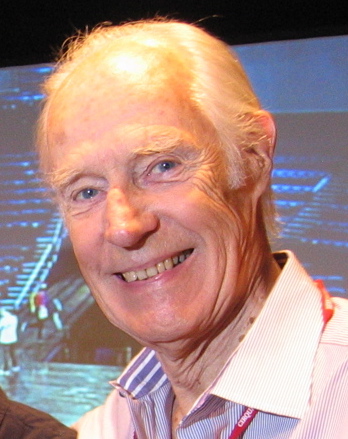 Sometime between 2004 and 2006, George Martin and his son Giles Martin returned to the master tapes of “I Want You (She's So Heavy)” for inclusion in two mash-ups that would be included on the compilation album “Love.” First, the song “Being For The Benefit Of Mr. Kite! / I Want You (She's So Heavy) / Helter Skelter” features the heavy guitars of the original track, while Paul's bass line on the song is heard on the track “Here Comes The Sun." Sometime between 2004 and 2006, George Martin and his son Giles Martin returned to the master tapes of “I Want You (She's So Heavy)” for inclusion in two mash-ups that would be included on the compilation album “Love.” First, the song “Being For The Benefit Of Mr. Kite! / I Want You (She's So Heavy) / Helter Skelter” features the heavy guitars of the original track, while Paul's bass line on the song is heard on the track “Here Comes The Sun."
 Giles Martin and engineer Sam Okell returned to the master tapes of "I Want You (She's So Heavy)" once again sometime in 2019 to create a vibrant new stereo mix of the song for inclusion in the various editions of "Abbey Road" for its 50th Anniversary. Along with this newly created mix, they worked at making a composite mix of an outtake of the rhythm track The Beatles made at Trident Studios on February 22nd, 1969 with the concluding segment of the eight-track reduction mix, revealing Billy Preston's orgasmic organ playing for the first time. Giles Martin and engineer Sam Okell returned to the master tapes of "I Want You (She's So Heavy)" once again sometime in 2019 to create a vibrant new stereo mix of the song for inclusion in the various editions of "Abbey Road" for its 50th Anniversary. Along with this newly created mix, they worked at making a composite mix of an outtake of the rhythm track The Beatles made at Trident Studios on February 22nd, 1969 with the concluding segment of the eight-track reduction mix, revealing Billy Preston's orgasmic organ playing for the first time.
Song Structure and Style
While "I Want You (She's So Heavy)" stretches to nearly eight minutes in length, its structure is actually quite simple. It comes out to 'verse/ verse/ refrain/ verse (instrumental)/ refrain/ verse/ refrain' (or aababab). A shortened version of the refrain acts as an introduction while the final refrain indicated above is highly elongated to act as a conclusion.
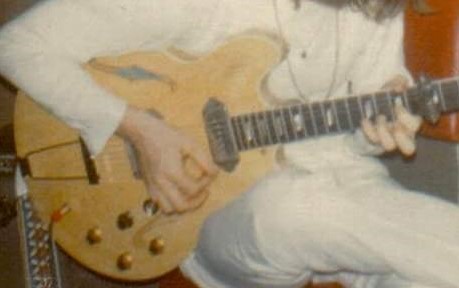 The shortened refrain introduction is five measures long, and is in 6/8 time as are all of the refrains. John's double-tracked rhythm guitar plays a winding single-note pattern while Ringo plays a simple drum pattern with two triple-beat cymbal crash accents that coincide with Paul's concise bass pattern. George comes in with a lead guitar passage in the second measure that continues through the introduction, this being double-tracked as well, which then spreads out in the fifth measure to create an impressive harmony with itself. The fifth measure ends with a dramatic pause that hangs in the air, the meter of the song momentarily disappearing in anticipation of John leading the group into his first verse which follows next. The shortened refrain introduction is five measures long, and is in 6/8 time as are all of the refrains. John's double-tracked rhythm guitar plays a winding single-note pattern while Ringo plays a simple drum pattern with two triple-beat cymbal crash accents that coincide with Paul's concise bass pattern. George comes in with a lead guitar passage in the second measure that continues through the introduction, this being double-tracked as well, which then spreads out in the fifth measure to create an impressive harmony with itself. The fifth measure ends with a dramatic pause that hangs in the air, the meter of the song momentarily disappearing in anticipation of John leading the group into his first verse which follows next.
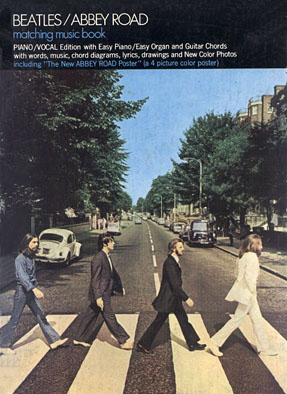 The first verse, as with all of the verses, is (count them) 26 measures long. Since these verses are considered the main framework of the song, and are mostly in 4/4 time as apposed to the refrains which are in 6/8 time, we can say that “I Want You (She's So Heavy)” is primarily in 4/4 time. And if that isn't tricky enough, there are two measures of each verse that are in 2/4 time, these being measures nine and twenty. Consistent with how John composes songs in his head with structural oddities, which George mentions above as being “very original to a John-type song,” the band undoubtedly had to work quite hard to understand and then perfect what he wanted. This awkwardness can be detected in early attempts at working out the song in January with Ringo and Billy Preston as can be heard on bootleg recordings. The first verse, as with all of the verses, is (count them) 26 measures long. Since these verses are considered the main framework of the song, and are mostly in 4/4 time as apposed to the refrains which are in 6/8 time, we can say that “I Want You (She's So Heavy)” is primarily in 4/4 time. And if that isn't tricky enough, there are two measures of each verse that are in 2/4 time, these being measures nine and twenty. Consistent with how John composes songs in his head with structural oddities, which George mentions above as being “very original to a John-type song,” the band undoubtedly had to work quite hard to understand and then perfect what he wanted. This awkwardness can be detected in early attempts at working out the song in January with Ringo and Billy Preston as can be heard on bootleg recordings.
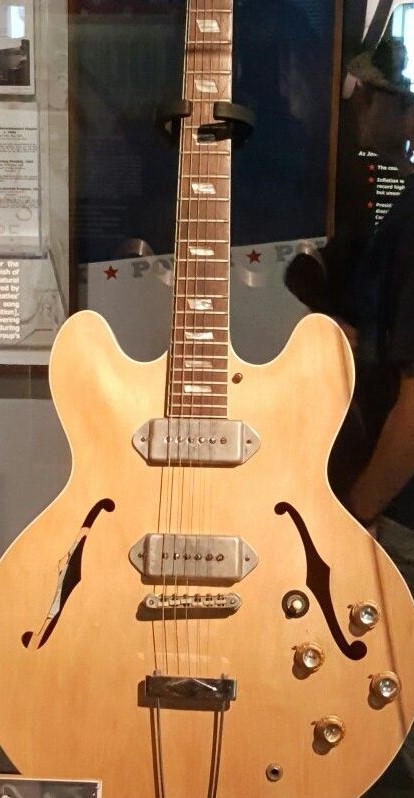 This first verse is unique in that it is the only one that utilizes the band accent feature that answers John's lead guitar/vocal phrases. This encompasses the first six measures, John singing and playing a lyrical phrase simultaneously (not unlike what is done by various blues and jazz players and later became a trademark for George Benson) this being followed by staccato accents from the rest of the players. After the first Lennon phrase, three accents are played in the first measure. After the second phrase, four accents are heard in the fourth measure. After the third phrase, three more accents are heard in the sixth measure. Because of the silence between these phrases, tape hiss is quite noticeable, something that any engineering staff tries to avoid at all cost, especially on a Beatles recording that will be heard by the masses. However, due to the circumstances of the recording and the arrangement, it was unavoidable and is noticeable even after digital remastering. This first verse is unique in that it is the only one that utilizes the band accent feature that answers John's lead guitar/vocal phrases. This encompasses the first six measures, John singing and playing a lyrical phrase simultaneously (not unlike what is done by various blues and jazz players and later became a trademark for George Benson) this being followed by staccato accents from the rest of the players. After the first Lennon phrase, three accents are played in the first measure. After the second phrase, four accents are heard in the fourth measure. After the third phrase, three more accents are heard in the sixth measure. Because of the silence between these phrases, tape hiss is quite noticeable, something that any engineering staff tries to avoid at all cost, especially on a Beatles recording that will be heard by the masses. However, due to the circumstances of the recording and the arrangement, it was unavoidable and is noticeable even after digital remastering.
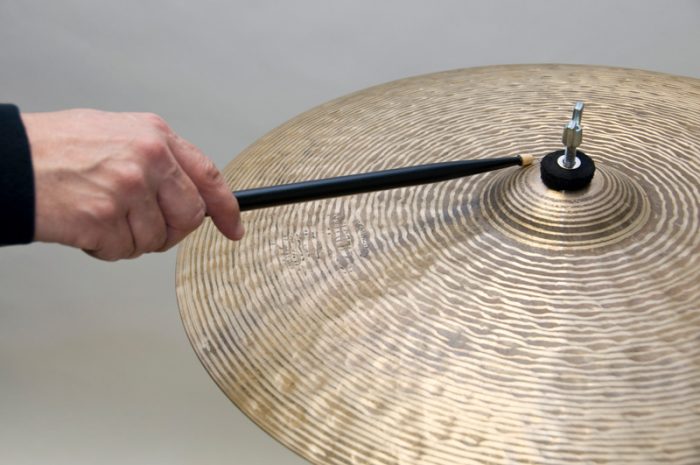 After this, the full band kicks in, Ringo plodding along with a subdued beat while riding on the bell of the cymbal as George and Billy Preston take on the rhythm chords on their instruments and Paul follows along appropriately through to the eleventh measure. This measure contains a nice snare drum fill from Ringo in anticipation of the second part of the verse while John hits a couple guitar chords to fill out the measure. After this, the full band kicks in, Ringo plodding along with a subdued beat while riding on the bell of the cymbal as George and Billy Preston take on the rhythm chords on their instruments and Paul follows along appropriately through to the eleventh measure. This measure contains a nice snare drum fill from Ringo in anticipation of the second part of the verse while John hits a couple guitar chords to fill out the measure.
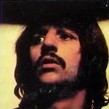 Measures twelve through twenty act as a repeat of the first section of the verse but in a higher key, John ultimately playing and singing the same passages as before but in a higher register for emotional effect. The rest of the players shift gears as well, Ringo switching from hitting the ride cymbal on quarter-beats to eighth-beats as Paul gets a lot more adventurous on bass and Billy Preston plays some descending organ chords for nice effect. The twentieth measure is unique here, this not only being in 2/4 time but played as a triplet by all involved on the ascending phrase “driving me.” Measures twelve through twenty act as a repeat of the first section of the verse but in a higher key, John ultimately playing and singing the same passages as before but in a higher register for emotional effect. The rest of the players shift gears as well, Ringo switching from hitting the ride cymbal on quarter-beats to eighth-beats as Paul gets a lot more adventurous on bass and Billy Preston plays some descending organ chords for nice effect. The twentieth measure is unique here, this not only being in 2/4 time but played as a triplet by all involved on the ascending phrase “driving me.”
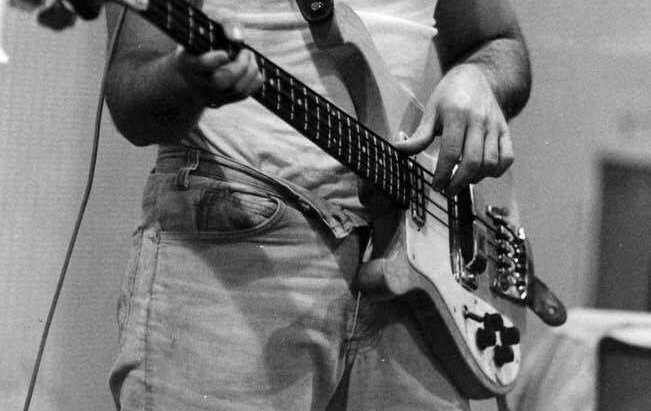 This takes us into the third part of the three-part verse, which falls on measures 21 through 26. This startling section can also be broken down into three repeated sections, measures 21 and 22 primarily featuring John, George and Billy Preston pounding out a discordant chord in a broken sequence of seven followed by a 'Beatles break' that is taken over by some fancy bass footwork from Paul. This is then repeated in measures 23 and 24, and then an altered version of the same is heard in measures 25 and 26. This final section has the seven startling chords played equally in a row this time and is followed by another 'Beatles break' where only a simple open hi-hat tap from Ringo is heard. This finally ends the intricate first verse. This takes us into the third part of the three-part verse, which falls on measures 21 through 26. This startling section can also be broken down into three repeated sections, measures 21 and 22 primarily featuring John, George and Billy Preston pounding out a discordant chord in a broken sequence of seven followed by a 'Beatles break' that is taken over by some fancy bass footwork from Paul. This is then repeated in measures 23 and 24, and then an altered version of the same is heard in measures 25 and 26. This final section has the seven startling chords played equally in a row this time and is followed by another 'Beatles break' where only a simple open hi-hat tap from Ringo is heard. This finally ends the intricate first verse.
 Then the entire process is repeated for verse two. This time around, however, the first six measures are played by the entire band instead of the accented answering, Ringo riding on the cymbal with eighth-beats throughout and performing his eleventh-measure drum fill on toms this time around. John excitedly adds extraneous guitar phrases during the open spaces without vocal lines and Paul gets even more adventurous on bass along the way. In the final measure, John, Paul and George sing “She's so...” in the final break in anticipation of the refrain that comes next. Then the entire process is repeated for verse two. This time around, however, the first six measures are played by the entire band instead of the accented answering, Ringo riding on the cymbal with eighth-beats throughout and performing his eleventh-measure drum fill on toms this time around. John excitedly adds extraneous guitar phrases during the open spaces without vocal lines and Paul gets even more adventurous on bass along the way. In the final measure, John, Paul and George sing “She's so...” in the final break in anticipation of the refrain that comes next.
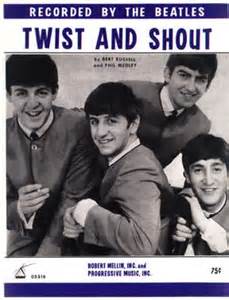 The refrain is actually a twice repeated version of the introduction we already heard, making the refrain ten measures long and switching the song into 6/8 time once again. The arrangement is virtually the same as in the introduction minus George's lead guitar work but with a few additional elements. Billy Preston goes to town on organ in measures one through three and again in measures six through eight (you can almost see him throwing his head back while listening to this section of the song). Also, starting in measure four, John, Paul and George finish their phrase from the end of the second verse, harmonizing the word “heavyyyyyy” and then repeating the word in measures six through eight in a layered fashion, not unlike what is heard in “Twist And Shout.” First heard is John, then George, and then Paul on the highest note which then falls slightly with the chord change in measure eight. During the break at the end of measure ten, we hear John alter the tone switch on his guitar in preparation for the lead guitar work he'll be performing on the instrumental verse that follows. The refrain is actually a twice repeated version of the introduction we already heard, making the refrain ten measures long and switching the song into 6/8 time once again. The arrangement is virtually the same as in the introduction minus George's lead guitar work but with a few additional elements. Billy Preston goes to town on organ in measures one through three and again in measures six through eight (you can almost see him throwing his head back while listening to this section of the song). Also, starting in measure four, John, Paul and George finish their phrase from the end of the second verse, harmonizing the word “heavyyyyyy” and then repeating the word in measures six through eight in a layered fashion, not unlike what is heard in “Twist And Shout.” First heard is John, then George, and then Paul on the highest note which then falls slightly with the chord change in measure eight. During the break at the end of measure ten, we hear John alter the tone switch on his guitar in preparation for the lead guitar work he'll be performing on the instrumental verse that follows.
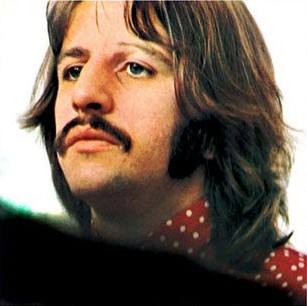 This instrumental verse is essentially similar to the second verse but played mostly in a more subdued manner without John's vocals. The primary focus is his lead guitar work which is played soulfully while Ringo alters from tom to snare in a jazz-like rhythm while still riding on the cymbal, playing his eleventh-measure drum fill on the toms. Once again, the final measure includes the incomplete phrase “She's so...” as heard at the conclusion of the second verse. The refrain that follows is a virtual repeat of the first refrain with the exception being the word “heavyyyyy” coming in on the third measure this time instead of the fourth, this still extending into the fifth measure as before. The vocalists then repeat the entire phrase "She's so heavyyyy" instead of just the last word as they had done in the previous refrain, repeating the layered vocals as before. This instrumental verse is essentially similar to the second verse but played mostly in a more subdued manner without John's vocals. The primary focus is his lead guitar work which is played soulfully while Ringo alters from tom to snare in a jazz-like rhythm while still riding on the cymbal, playing his eleventh-measure drum fill on the toms. Once again, the final measure includes the incomplete phrase “She's so...” as heard at the conclusion of the second verse. The refrain that follows is a virtual repeat of the first refrain with the exception being the word “heavyyyyy” coming in on the third measure this time instead of the fourth, this still extending into the fifth measure as before. The vocalists then repeat the entire phrase "She's so heavyyyy" instead of just the last word as they had done in the previous refrain, repeating the layered vocals as before.
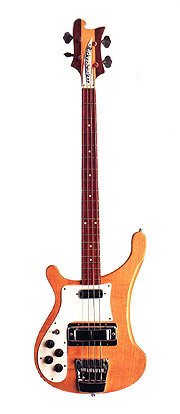 The fourth and final verse, which is somewhat identical to the second verse, comes next. Some exceptions include Ringo continuing his jazz-like altering from toms to snare throughout until the final section begins on measure 21, Paul's bass hijinks going even further in this verse, such as with his fast-moving descending notes in measure eleven, and John's vocal/guitar interplay getting fancier as he even adds a few extra words this time around, such as “babe,” “you know” and a final “...mad” to complete the “driving me...” phrase in measure 20. He also adds the blood-curdling “YEAAAAAHHHH!” scream in measures 21 and 22, signifying the high point of John's emotional plea to Yoko in the song, followed by the indecipherable voice heard during the break in measure 24. The fourth and final verse, which is somewhat identical to the second verse, comes next. Some exceptions include Ringo continuing his jazz-like altering from toms to snare throughout until the final section begins on measure 21, Paul's bass hijinks going even further in this verse, such as with his fast-moving descending notes in measure eleven, and John's vocal/guitar interplay getting fancier as he even adds a few extra words this time around, such as “babe,” “you know” and a final “...mad” to complete the “driving me...” phrase in measure 20. He also adds the blood-curdling “YEAAAAAHHHH!” scream in measures 21 and 22, signifying the high point of John's emotional plea to Yoko in the song, followed by the indecipherable voice heard during the break in measure 24.
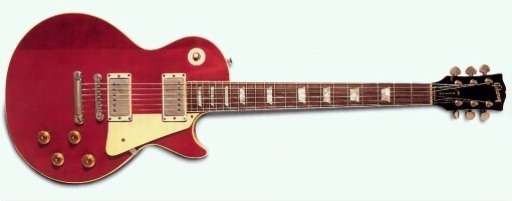 After John, Paul and George's introductory phrase “She's so...” as heard in the final measure of the last verse, which are the final lyrics heard in the song, we plunge head-first into the final refrain of the song, which is also used as its conclusion. The five measure pattern of the refrain is heard a total of fifteen times which comes to a total of 75 measures, including the final chopped off ending of the song. The double-tracked rhythm guitar pattern played by John is slightly off beat in the first measure but he quickly gets in step by the second measure. At the end of the third measure, the multiple-overdubbed guitars of John and George on his newly acquired Gibson Les Paul hone in on Paul's original bass melody line to add an immediate thickness to the sound which permeates the remainder of the song. After John, Paul and George's introductory phrase “She's so...” as heard in the final measure of the last verse, which are the final lyrics heard in the song, we plunge head-first into the final refrain of the song, which is also used as its conclusion. The five measure pattern of the refrain is heard a total of fifteen times which comes to a total of 75 measures, including the final chopped off ending of the song. The double-tracked rhythm guitar pattern played by John is slightly off beat in the first measure but he quickly gets in step by the second measure. At the end of the third measure, the multiple-overdubbed guitars of John and George on his newly acquired Gibson Les Paul hone in on Paul's original bass melody line to add an immediate thickness to the sound which permeates the remainder of the song.
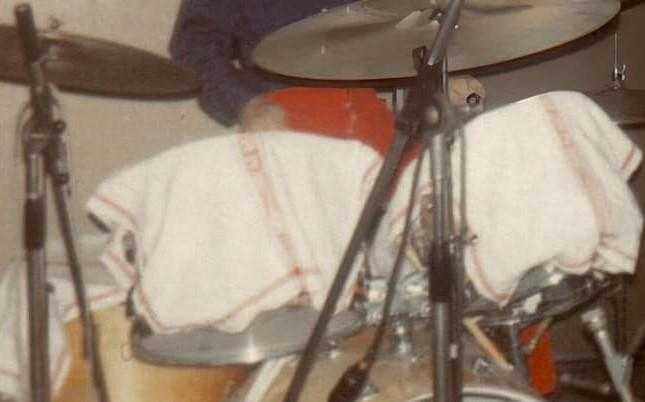 A rumbling backdrop of sound, undoubtedly coming from George's Moog synthesizer, becomes apparent around measure twenty while the “white noise” effect from the instrument begins to be detected by measure 25. Ringo begins thrashing around unabashedly on cymbals and with drum fills by measure 40 while Paul goes tastefully off the rails on bass, possibly the most adventurous he's ever been on the instrument during his entire career. As the “white noise” and Ringo's manually manipulated “wind machine” continue to swell in volume and threaten to totally envelop the sound of the main instruments, the tape is cut at the beginning of the 75th measure which brings the entire song to an abrupt halt, this continuing to make the listener's heart skip a beat even after decades of hearing the song. A rumbling backdrop of sound, undoubtedly coming from George's Moog synthesizer, becomes apparent around measure twenty while the “white noise” effect from the instrument begins to be detected by measure 25. Ringo begins thrashing around unabashedly on cymbals and with drum fills by measure 40 while Paul goes tastefully off the rails on bass, possibly the most adventurous he's ever been on the instrument during his entire career. As the “white noise” and Ringo's manually manipulated “wind machine” continue to swell in volume and threaten to totally envelop the sound of the main instruments, the tape is cut at the beginning of the 75th measure which brings the entire song to an abrupt halt, this continuing to make the listener's heart skip a beat even after decades of hearing the song.
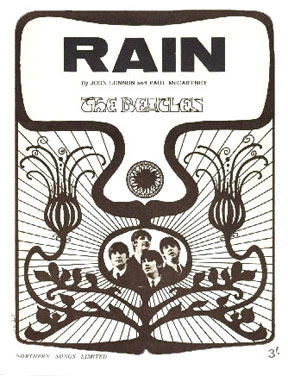 Much can be said about the stellar performances of John, Paul and Ringo on this song. John's incredible simultaneous vocal/lead guitar work on the song, while not as perfectly performed as, say, George Benson, shows that he was no slouch as a musician and performer. As stated above, this song was the perfect vehicle for Paul to shine as a bass guitarist, this arguably being the best example of his inventiveness on the instrument in his entire career. While his main melody lines had been worked out in advance, his ad lib canoodling throughout the song is incredible. And as for Ringo, there are other songs in The Beatles cannon that are pointed to as examples of his talent, such as “A Day In The Life,” “Rain” and “The End,” but the final minutes of “I Want You (She's So Heavy)” displays Ringo as unhinged and imaginative on the drum kit, feeling the groove perfectly and expressing himself like the pro that he had become. Much can be said about the stellar performances of John, Paul and Ringo on this song. John's incredible simultaneous vocal/lead guitar work on the song, while not as perfectly performed as, say, George Benson, shows that he was no slouch as a musician and performer. As stated above, this song was the perfect vehicle for Paul to shine as a bass guitarist, this arguably being the best example of his inventiveness on the instrument in his entire career. While his main melody lines had been worked out in advance, his ad lib canoodling throughout the song is incredible. And as for Ringo, there are other songs in The Beatles cannon that are pointed to as examples of his talent, such as “A Day In The Life,” “Rain” and “The End,” but the final minutes of “I Want You (She's So Heavy)” displays Ringo as unhinged and imaginative on the drum kit, feeling the groove perfectly and expressing himself like the pro that he had become.
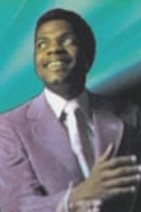 Billy Preston was definitely feeling the groove as well, infusing the gospel-tinged expressions and rhythm pads that added an authentic element that The Beatles wouldn't have been able to inject into the song on their own. George may have taken more of a backseat on this song, but his opening lead guitar melody lines and his cooperation with John on adding the army of guitar overdubs for the end of the song are commendable as well. Billy Preston was definitely feeling the groove as well, infusing the gospel-tinged expressions and rhythm pads that added an authentic element that The Beatles wouldn't have been able to inject into the song on their own. George may have taken more of a backseat on this song, but his opening lead guitar melody lines and his cooperation with John on adding the army of guitar overdubs for the end of the song are commendable as well.
American Releases
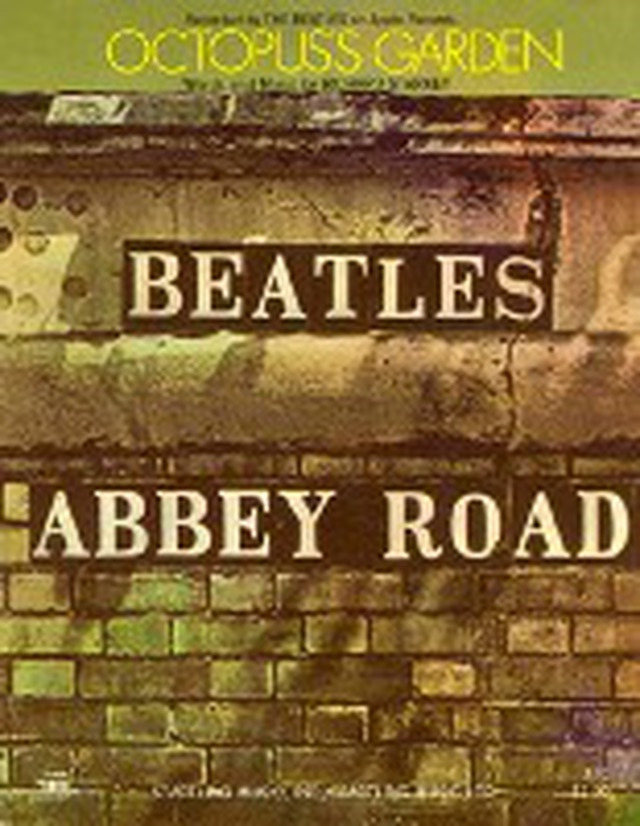 On October 1st, 1969, the final recorded Beatles album was released in America, simply titled "Abbey Road." "I Want You (She's So Heavy)" was prominently featured as the final song of side one which was an excellent follow-up to Ringo's lovable yet sing-songy "Octopus's Garden," displaying the versatility of the group among its songwriters. The album took only three weeks to jump into the top spot on the Billboard album chart, raking in a total of eleven weeks in the #1 position. The album first appeared on compact disc on October 10th, 1987, and then as a remastered release on September 9th, 2009, which removed the click from John's pickup selector switch before his solo at the 2:22 mark of the song as well as corrected the above-mentioned distorted scream from John at the 4:30 mark. A newly mixed 50th Anniversary version of the album was also released on vinyl and CD on September 27th, 2019, not to mention an opaque green vinyl edition coming out on October 10th, 2025 as an exclusive release available only at Target Department Stores. On October 1st, 1969, the final recorded Beatles album was released in America, simply titled "Abbey Road." "I Want You (She's So Heavy)" was prominently featured as the final song of side one which was an excellent follow-up to Ringo's lovable yet sing-songy "Octopus's Garden," displaying the versatility of the group among its songwriters. The album took only three weeks to jump into the top spot on the Billboard album chart, raking in a total of eleven weeks in the #1 position. The album first appeared on compact disc on October 10th, 1987, and then as a remastered release on September 9th, 2009, which removed the click from John's pickup selector switch before his solo at the 2:22 mark of the song as well as corrected the above-mentioned distorted scream from John at the 4:30 mark. A newly mixed 50th Anniversary version of the album was also released on vinyl and CD on September 27th, 2019, not to mention an opaque green vinyl edition coming out on October 10th, 2025 as an exclusive release available only at Target Department Stores.
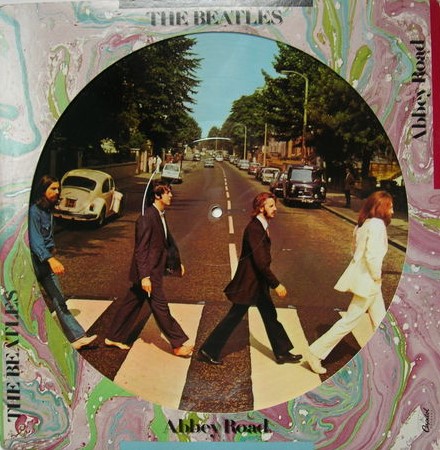 Sometime in 1978, Capitol re-released the “Abbey Road” album as a picture disc. Side one had the iconic front cover while side two contained a close-up of the wall photo of the back cover minus the song title listings. This release quickly went out of print but was then re-released on 180-gram vinyl for its 50th Anniversary on September 27th, 2019. Sometime in 1978, Capitol re-released the “Abbey Road” album as a picture disc. Side one had the iconic front cover while side two contained a close-up of the wall photo of the back cover minus the song title listings. This release quickly went out of print but was then re-released on 180-gram vinyl for its 50th Anniversary on September 27th, 2019.
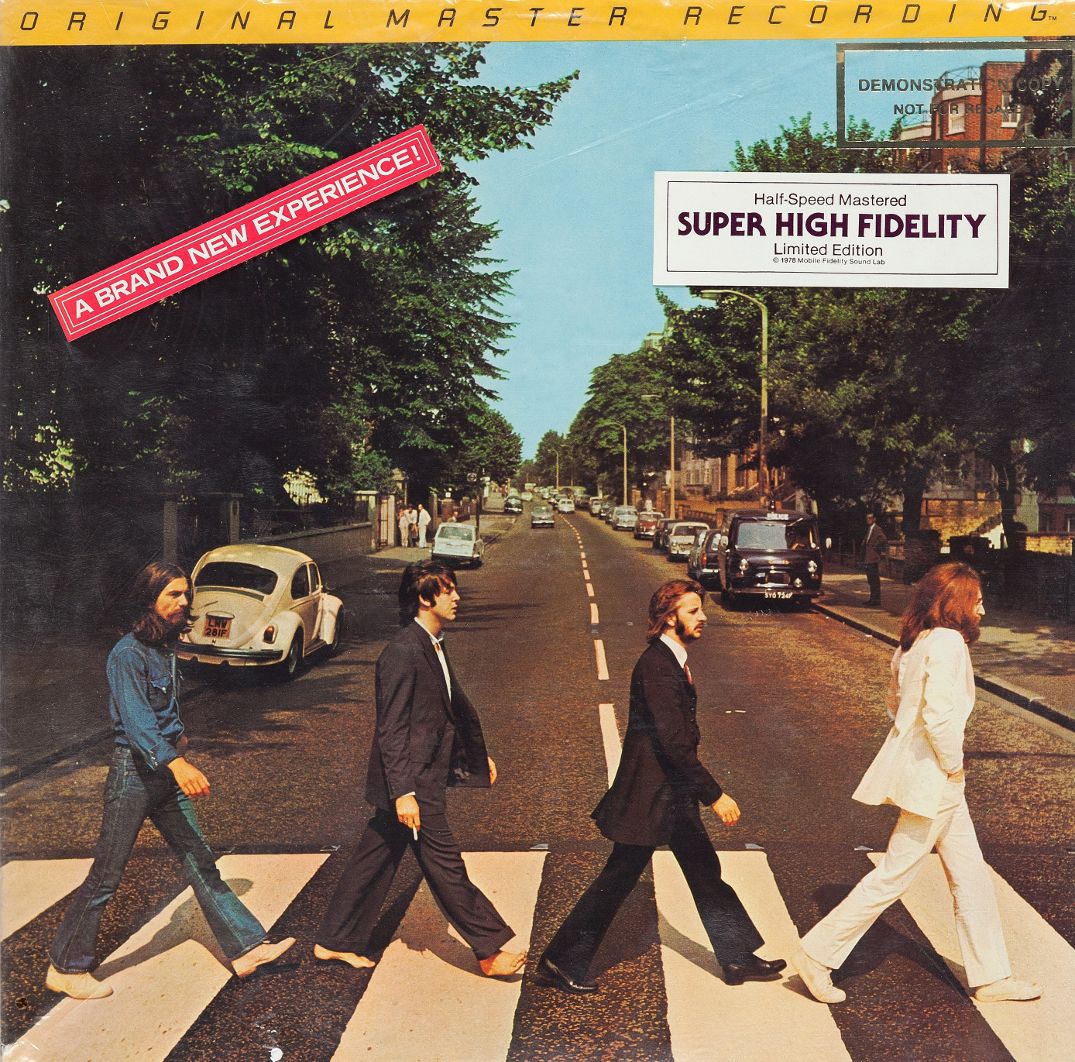 An interesting US vinyl edition of “Abbey Road” was released on December 28th, 1979, this being manufactured by Mobile Fidelity Sound Lab in Chatsworth, California as the first Beatles installment in their "Original Master Recording" series. Their practice was to prepare a new master utilizing half-speed mastering technology from the original master tapes, in this case using the leased sub-master from Capitol Records. Stickers on the shrinkwrap proclaimed this album as being “A Brand New Experience,” which proved to be the case. This version of the album sounded superior to all previous British and American pressings at that time. Unfortunately, this excellent edition of “Abbey Road” was only available for a short time and is quite collectible today. An interesting US vinyl edition of “Abbey Road” was released on December 28th, 1979, this being manufactured by Mobile Fidelity Sound Lab in Chatsworth, California as the first Beatles installment in their "Original Master Recording" series. Their practice was to prepare a new master utilizing half-speed mastering technology from the original master tapes, in this case using the leased sub-master from Capitol Records. Stickers on the shrinkwrap proclaimed this album as being “A Brand New Experience,” which proved to be the case. This version of the album sounded superior to all previous British and American pressings at that time. Unfortunately, this excellent edition of “Abbey Road” was only available for a short time and is quite collectible today.
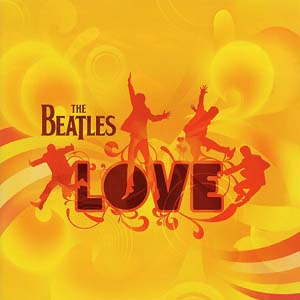 November 20th, 2006 was the release date for the above mentioned mash-ups of the song made by George and Giles Martin on the album “Love,” which was put together exclusively for the Cirque du Soleil show of the same name per arrangements made by the late George Harrison. This successful album peaked at #4 on the Billboard album chart. November 20th, 2006 was the release date for the above mentioned mash-ups of the song made by George and Giles Martin on the album “Love,” which was put together exclusively for the Cirque du Soleil show of the same name per arrangements made by the late George Harrison. This successful album peaked at #4 on the Billboard album chart.
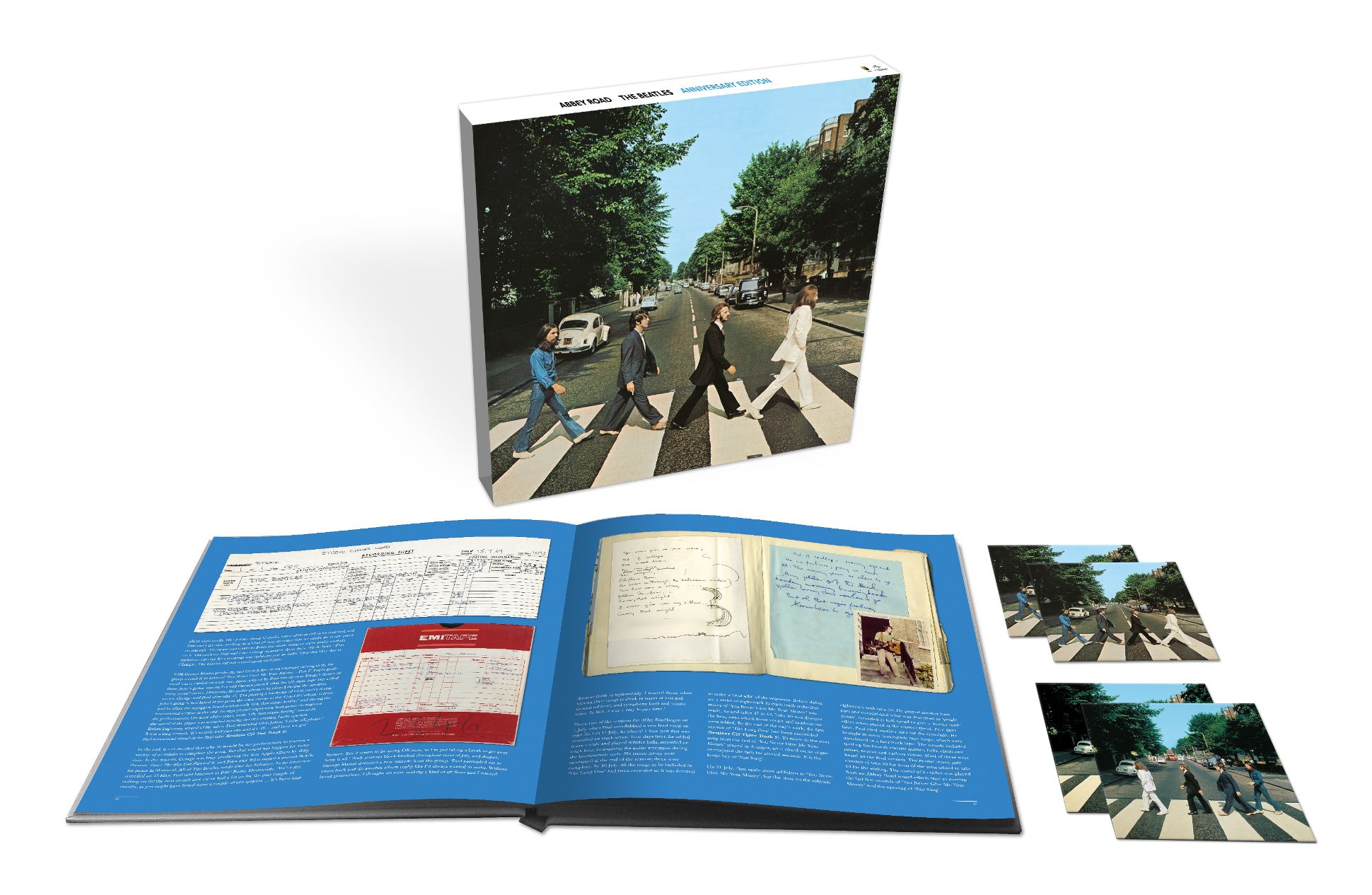 On September 27th, 2019, various editions of "Abbey Road" were released to commemorate its 50th Anniversary that featured interesting versions of "I Want You (She's So Heavy)." The "Deluxe" 2CD set, the "Triple Album" vinyl set, and the "Super Deluxe" 3CD + Blu-ray edition all contain the newly created Giles Martin mix of the entire album as well as a never-before-heard edit of a Trident rhythm track from February 22nd, 1969 and the concluding segment of the eight-track reduction mix, as described above. On September 27th, 2019, various editions of "Abbey Road" were released to commemorate its 50th Anniversary that featured interesting versions of "I Want You (She's So Heavy)." The "Deluxe" 2CD set, the "Triple Album" vinyl set, and the "Super Deluxe" 3CD + Blu-ray edition all contain the newly created Giles Martin mix of the entire album as well as a never-before-heard edit of a Trident rhythm track from February 22nd, 1969 and the concluding segment of the eight-track reduction mix, as described above.
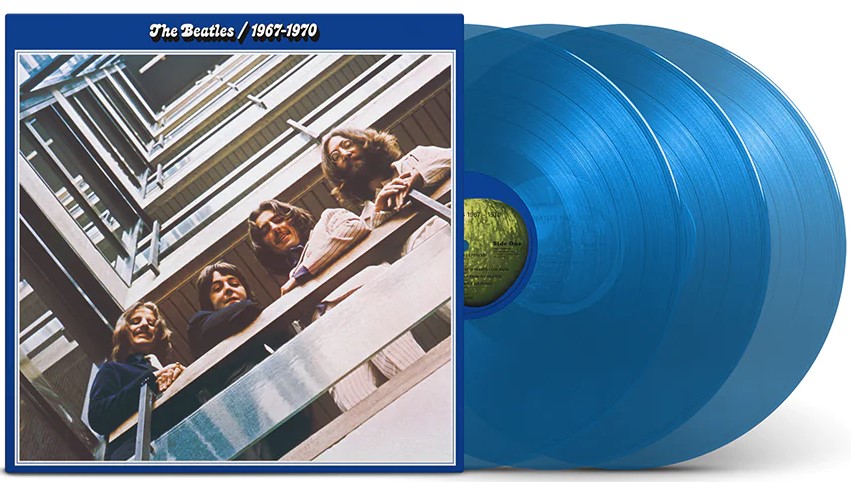 A 50th Anniversay edition of the compilation album "The Beatles / 1967 - 1970" (aka "The Blue Album") was released on November 10th, 2023. This expanded release included 12 additional songs for a total of 38 tracks, including the new mix of "I Want You (She's So Heavy)" detailed above, and was made available as a double CD and as a triple vinyl release on both black and blue vinyl. A 50th Anniversay edition of the compilation album "The Beatles / 1967 - 1970" (aka "The Blue Album") was released on November 10th, 2023. This expanded release included 12 additional songs for a total of 38 tracks, including the new mix of "I Want You (She's So Heavy)" detailed above, and was made available as a double CD and as a triple vinyl release on both black and blue vinyl.
Live Performances
Being well past their touring years, The Beatles never performed “I Want You (She's So Heavy)” live, other than John briefly touching on the guitar riff from the song on their rooftop concert of January 30th, 1969. Neither John nor the other Beatles ever thought to perform the song on any stage during their solo careers.
Conclusion
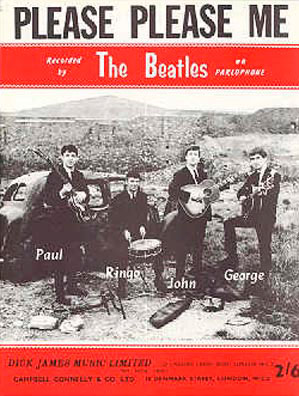 It almost appears inconceivable that John Lennon, the writer of such pop classics as "Please Please Me," "Any Time At All" and "All I've Got To Do" would, in only a matter of about six years, push the envelope to such a degree that he would also pen something as gut-wrenching and emotional as "I Want You (She's So Heavy)." It almost appears inconceivable that John Lennon, the writer of such pop classics as "Please Please Me," "Any Time At All" and "All I've Got To Do" would, in only a matter of about six years, push the envelope to such a degree that he would also pen something as gut-wrenching and emotional as "I Want You (She's So Heavy)."
His experience with romance and relationships appears to have been simplistic and uniform up to and including the early Beatle years, going through the motions as all do in their teens and early 1920's. However, his relationship with Yoko Ono affected him to the core, inspiring him to compose songs that expressed the raw emotions that he had never felt before. He didn't need many words to convey it – one could say it's difficult to convey in words anyway – but within The Beatles, and then as a solo artist, he had the vehicle to try. With a vast audience of Beatles fans listening, some understanding and some not, he bared his soul onto an eight-track recording console for all to hear. The result, especially in this song, is incredible. We all can only dream of experiencing a deep love in our lifetime such as John had for Yoko.
Song Summary
“I Want You (She's So Heavy)”
Written by: John Lennon / Paul McCartney
- Song Written: January and February, 1969
- Song Recorded: February 22, April 19 & 20, August 8, 11 & 20, 1969
- First US Release Date: October 1, 1969
- First US Album Release: Apple #SO-383 “Abbey Road”
- British Album Release: Apple #PCS 7088 “Abbey Road”
- US Single Release: n/a
- Highest Chart Position: n/a
- Length: 7:49
- Key: D minor
- Producer: George Martin, Glyn Johns, Chris Thomas
- Engineers: Barry Sheffield, Jeff Jarratt, Geoff Emerick, Phil McDonald, John Kurlander, Alan Parsons
Instrumentation (most likely):
- John Lennon - Lead and Backing Vocals, Lead and Ryhthm Guitar (1965 Epiphone ES-230TD Casino)
- Paul McCartney - Bass (1964 Rickenbacker 4001 S ), backing vocals
- George Harrison - Lead and Rhythm Guitar (1957 Gibson Les Paul Standard), Synthesizer (1967 Moog IIIp), backing vocals
- Ringo Starr - Drums (1968 Ludwig Hollywood Maple), conga drums, wind machine
- Billy Preston - Organ (Hammond RT-3)
Written and compiled by Dave Rybaczewski
|
IF YOU WOULD LIKE TO MAKE A DONATION TO KEEP THIS WEBSITE UP AND RUNNING, PLEASE CLICK BELOW!
Sign Up Below for our MONTHLY BEATLES TRIVIA QUIZ!
|